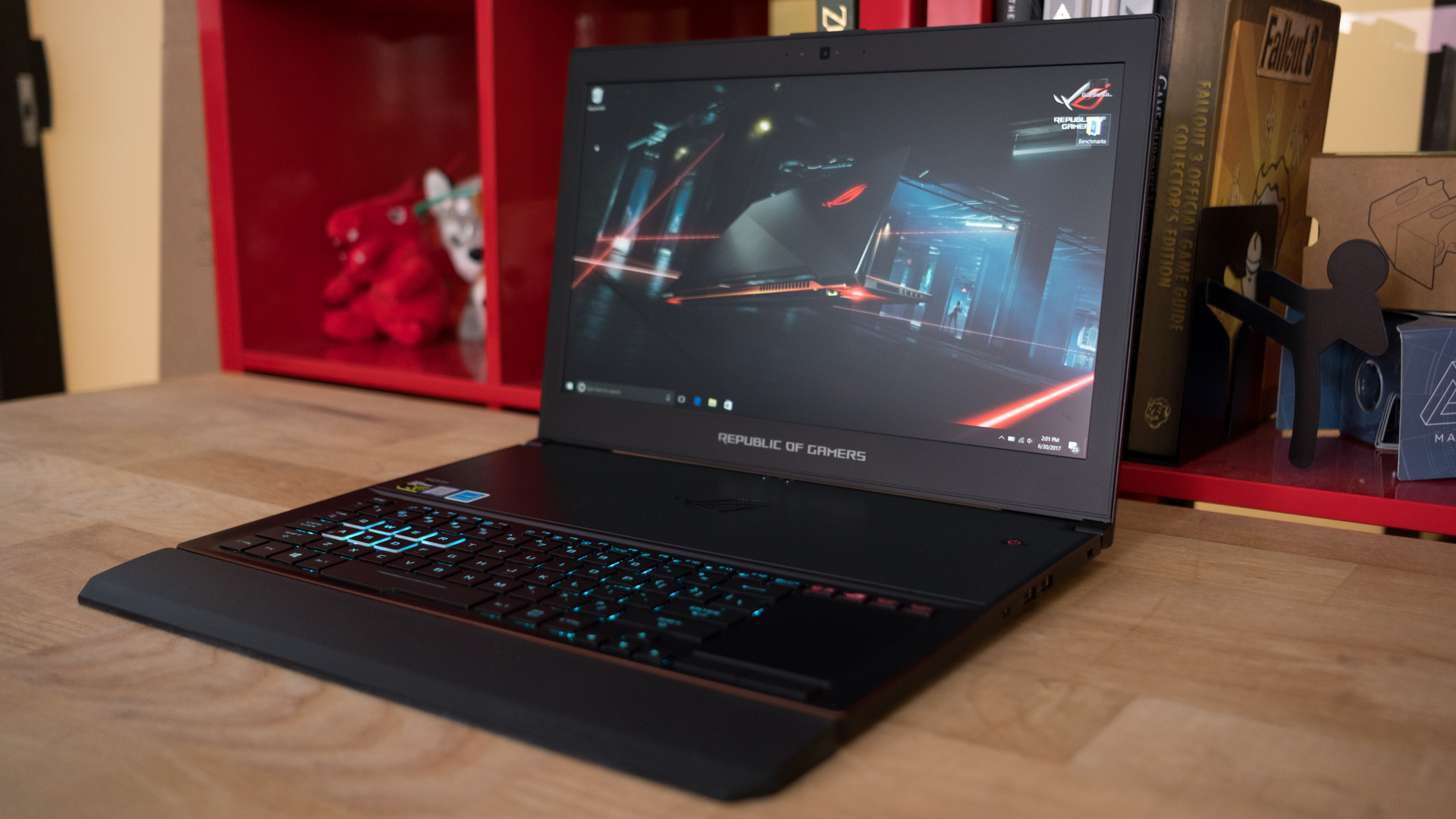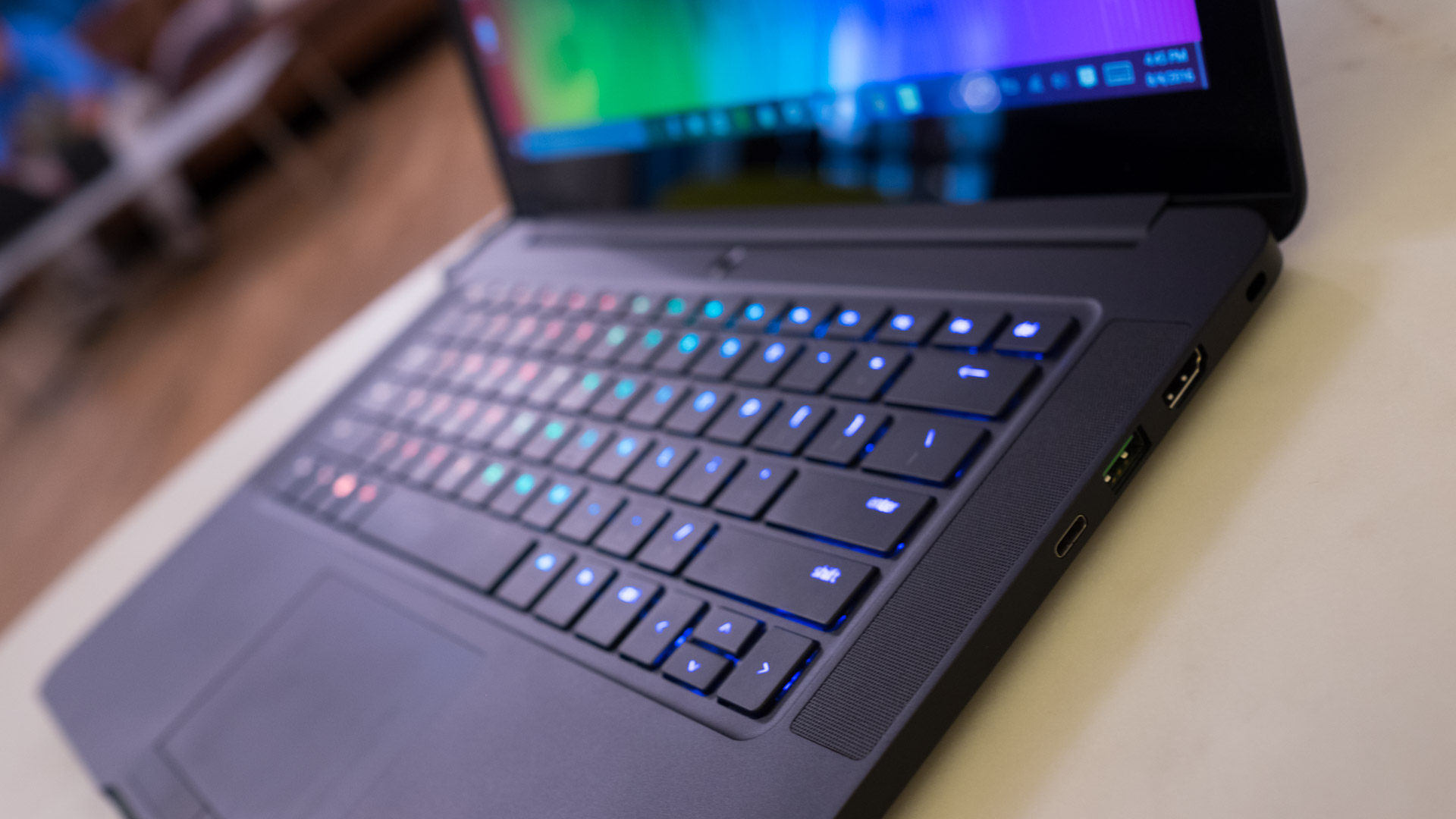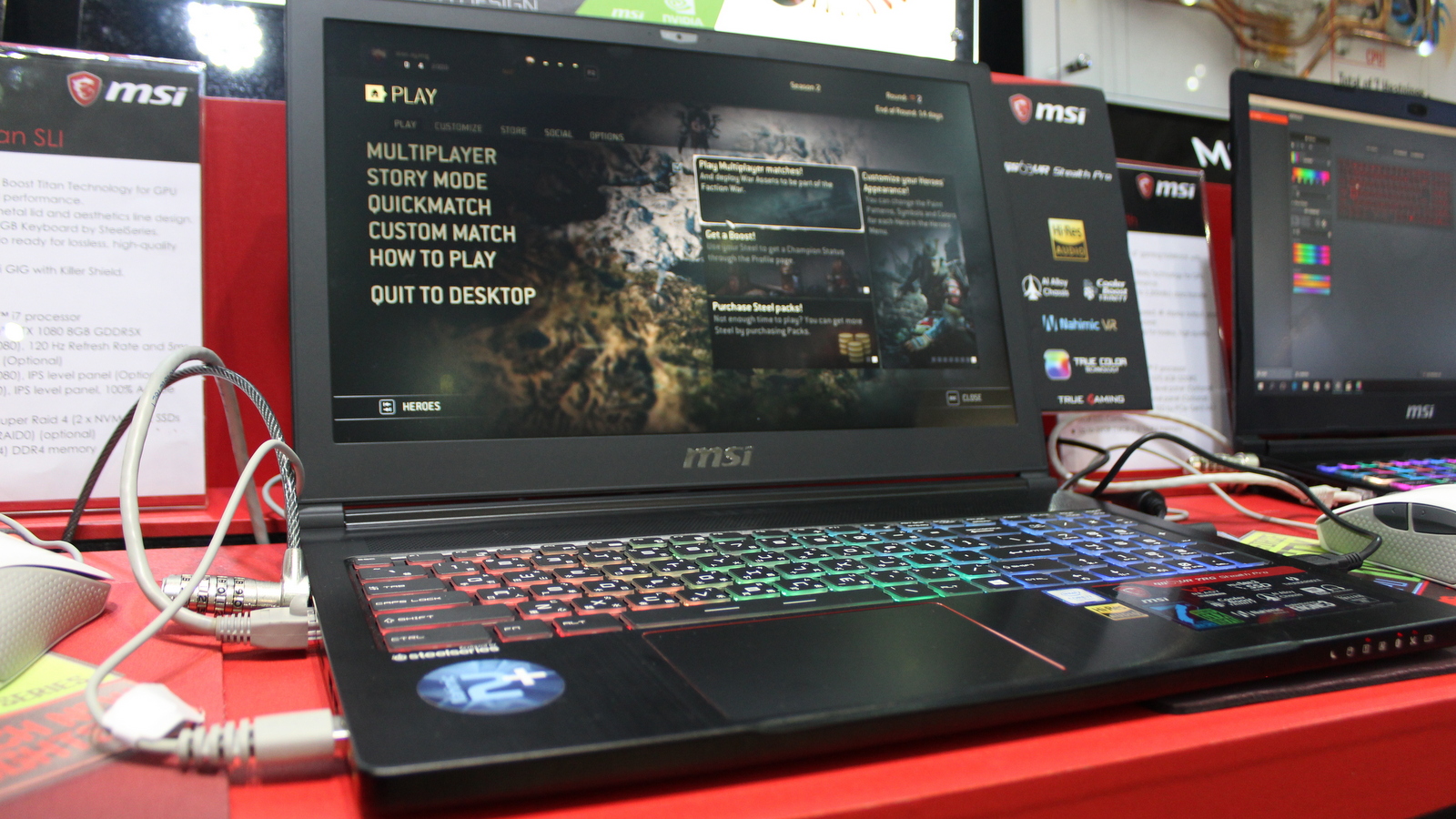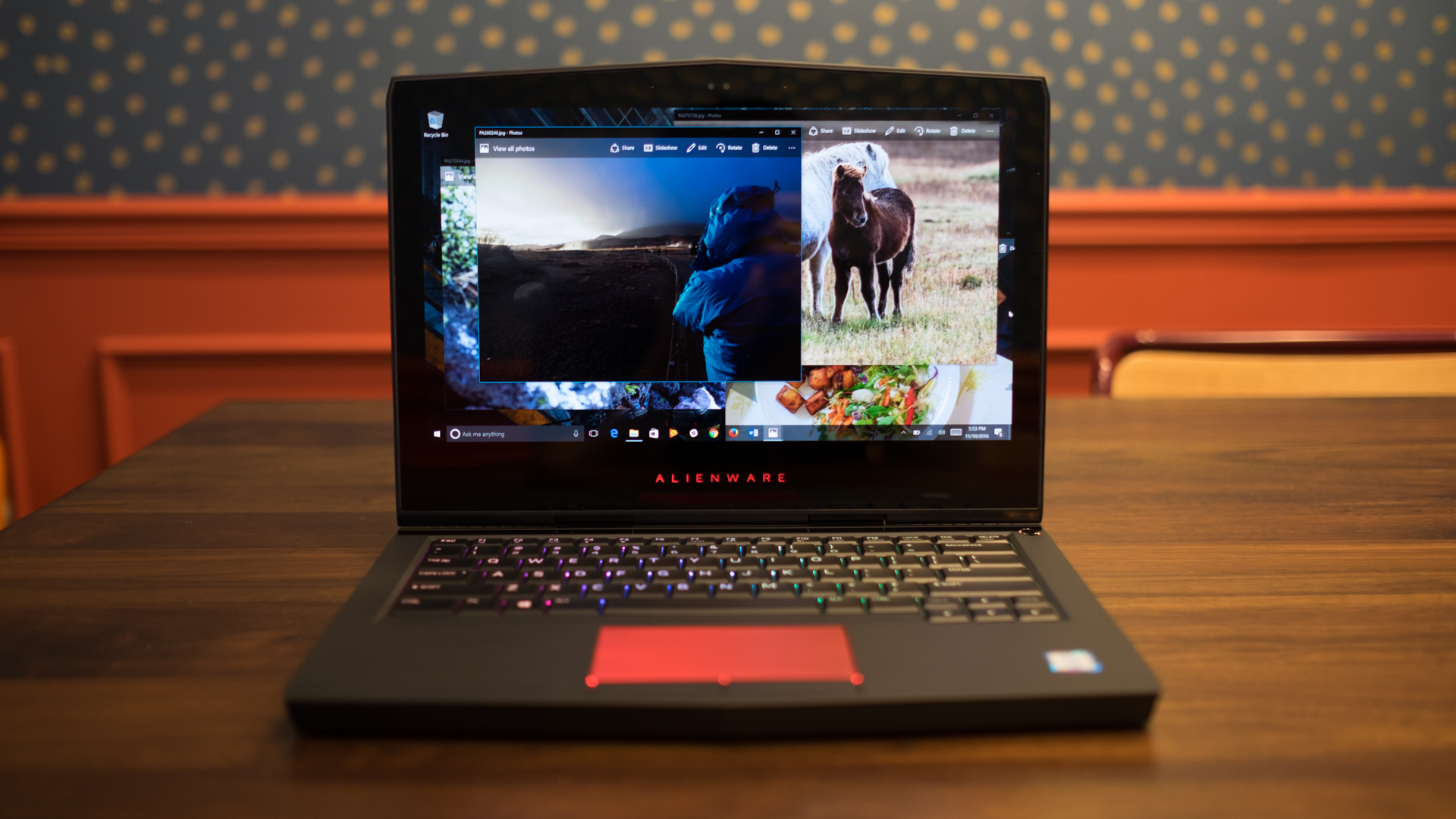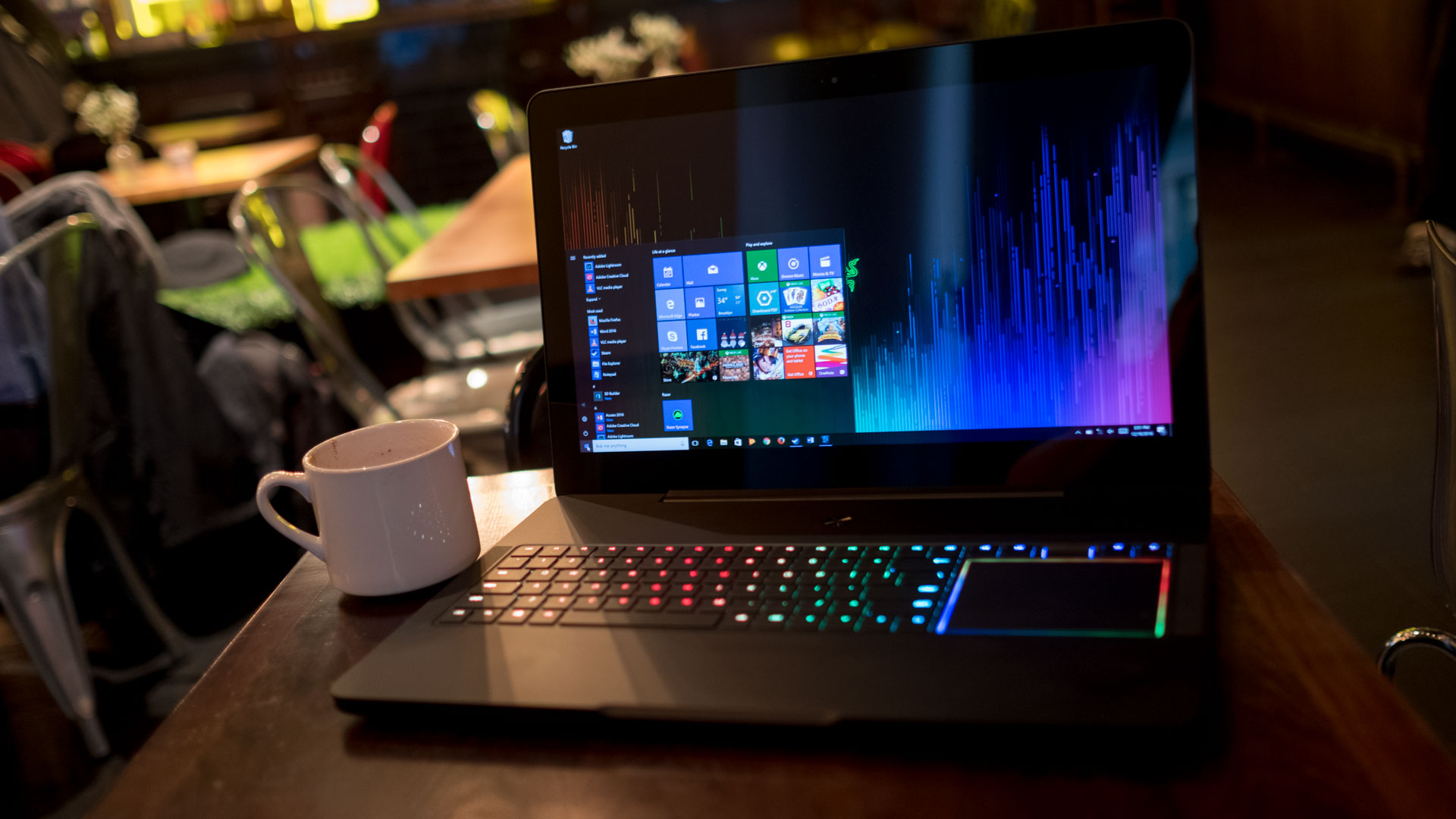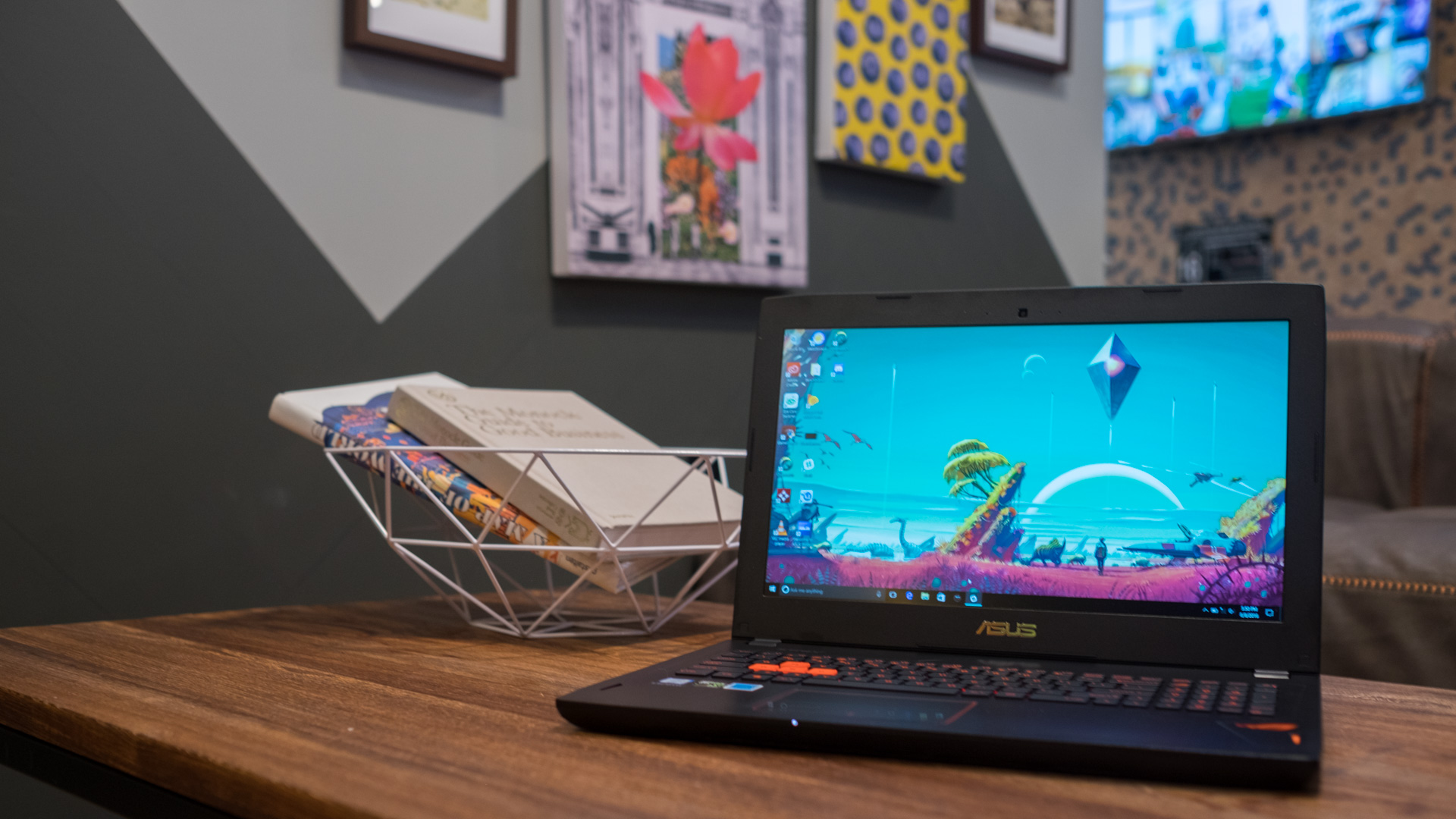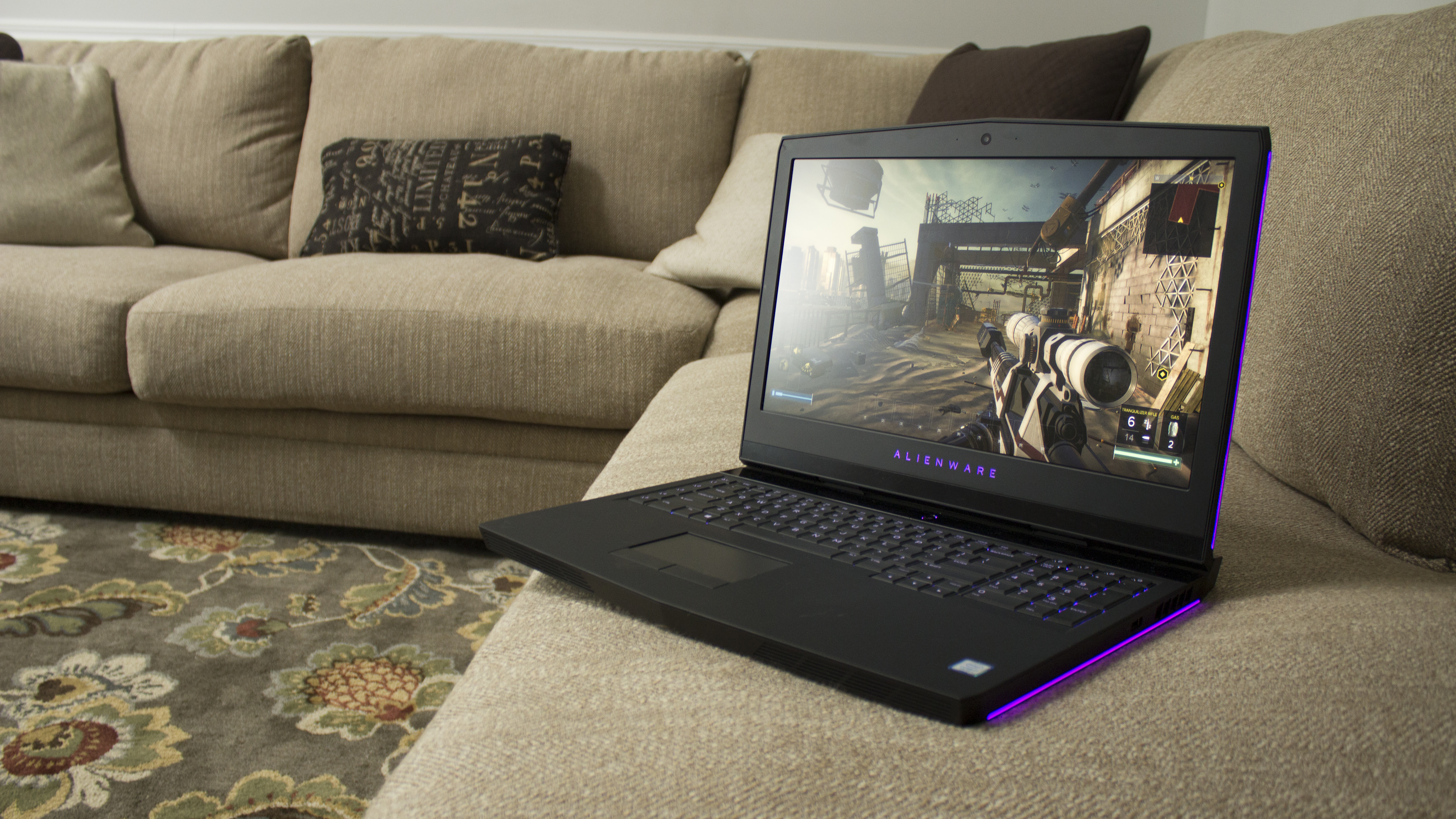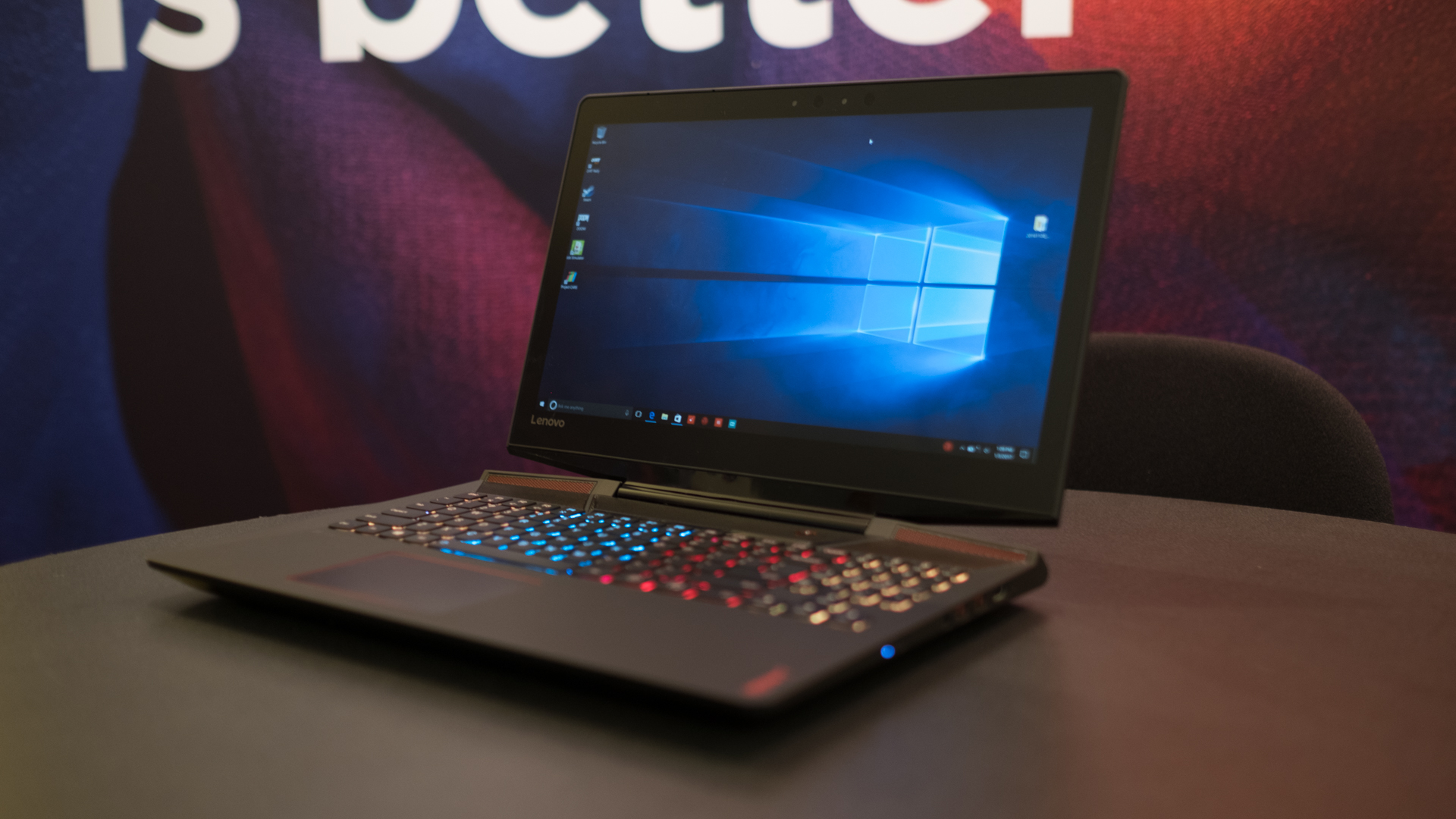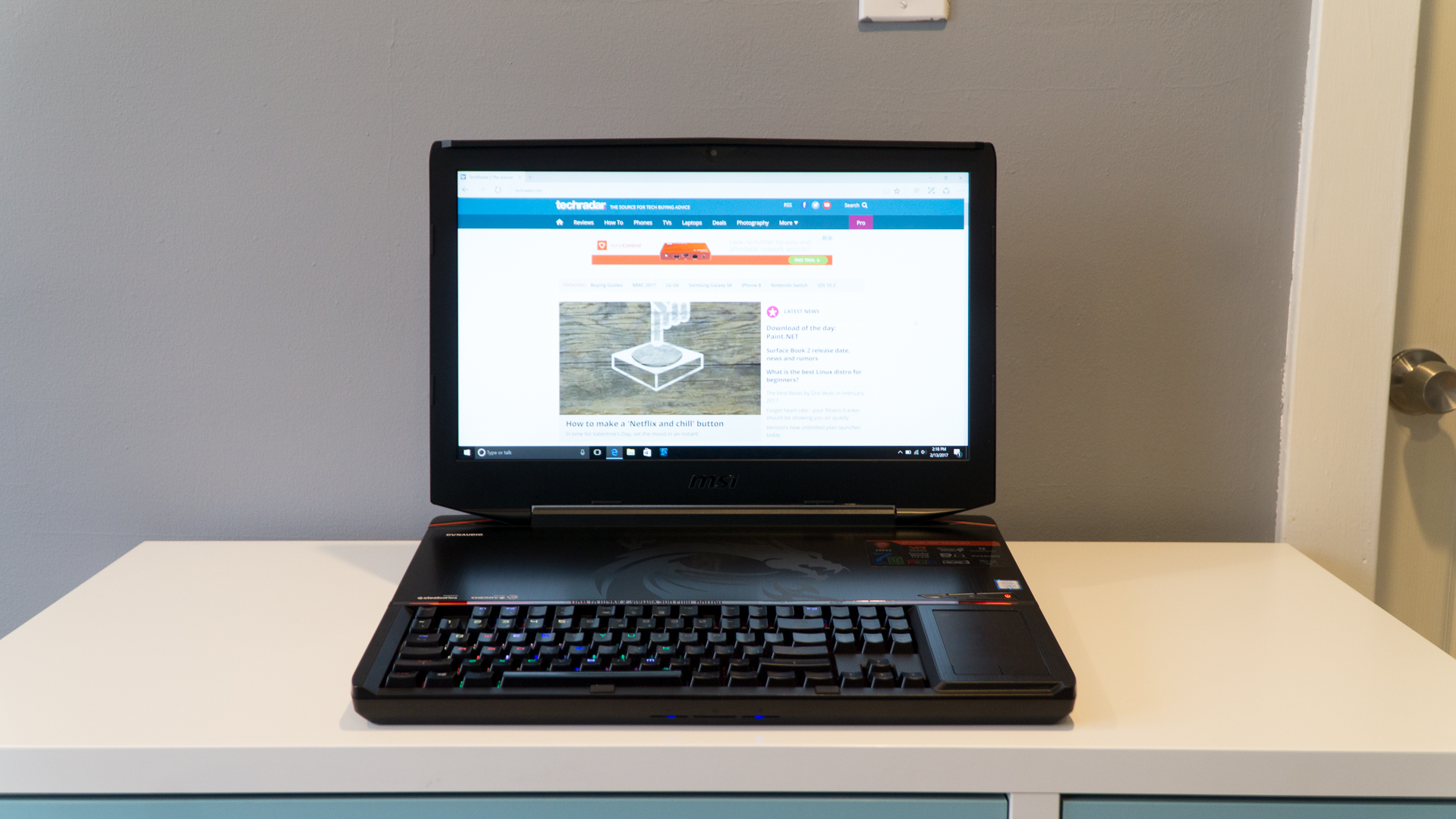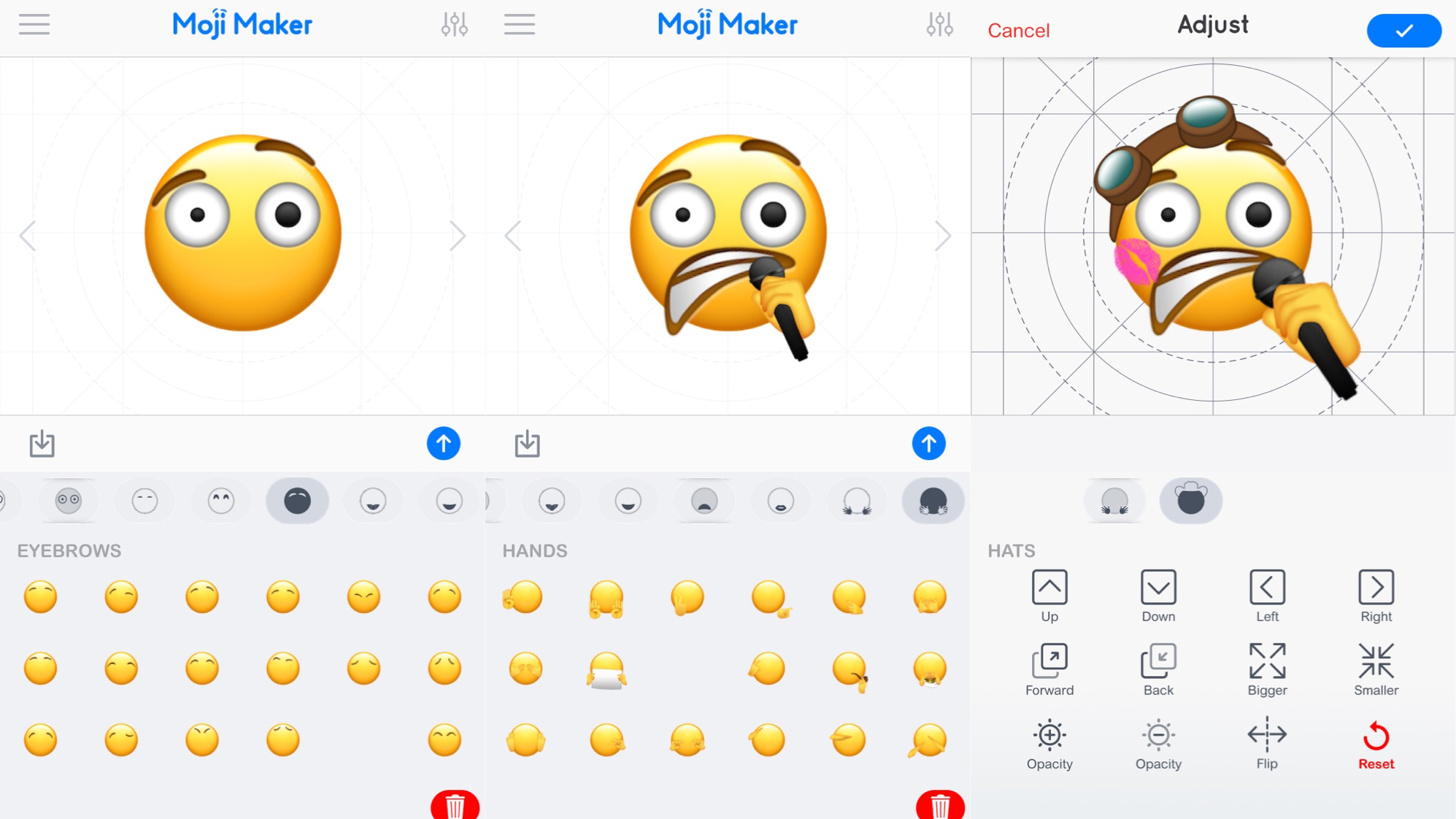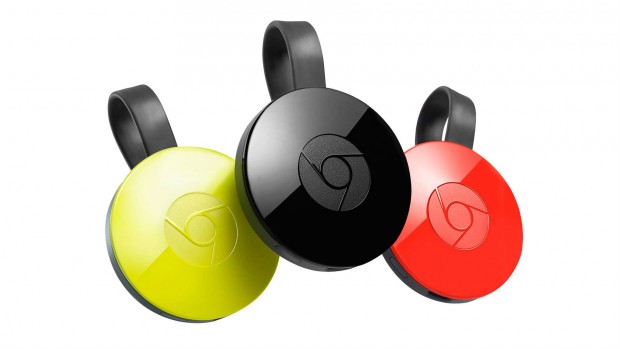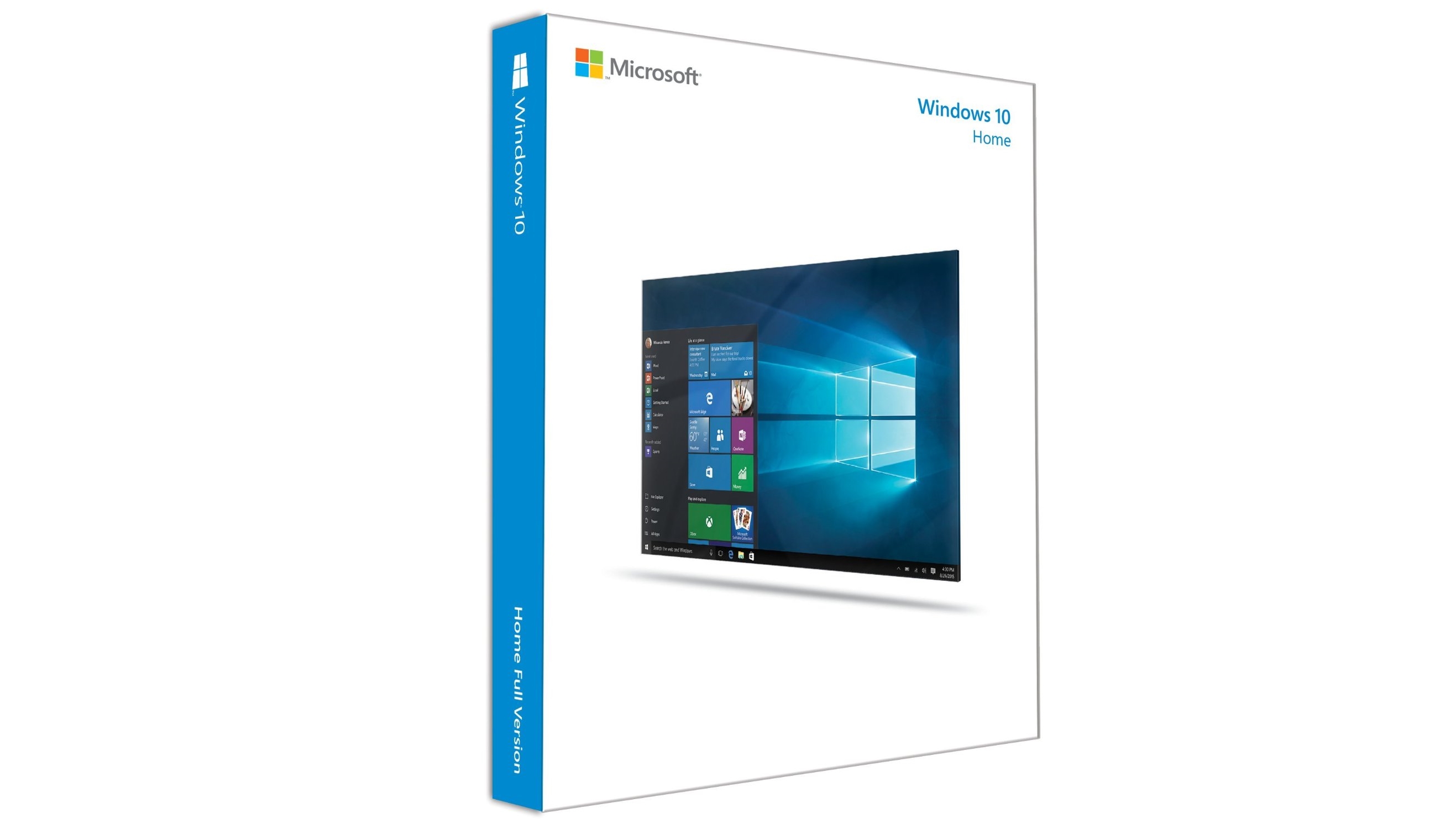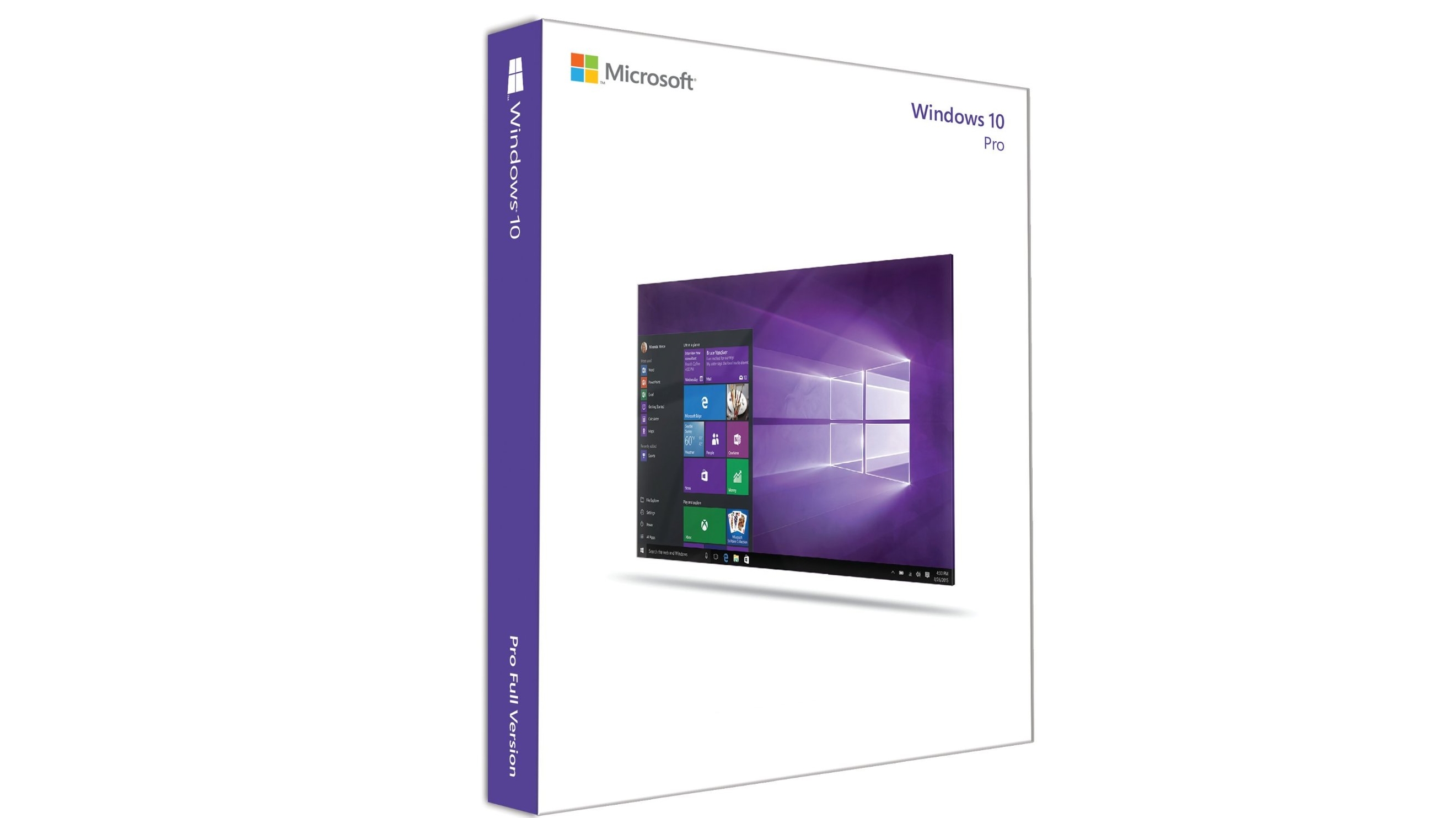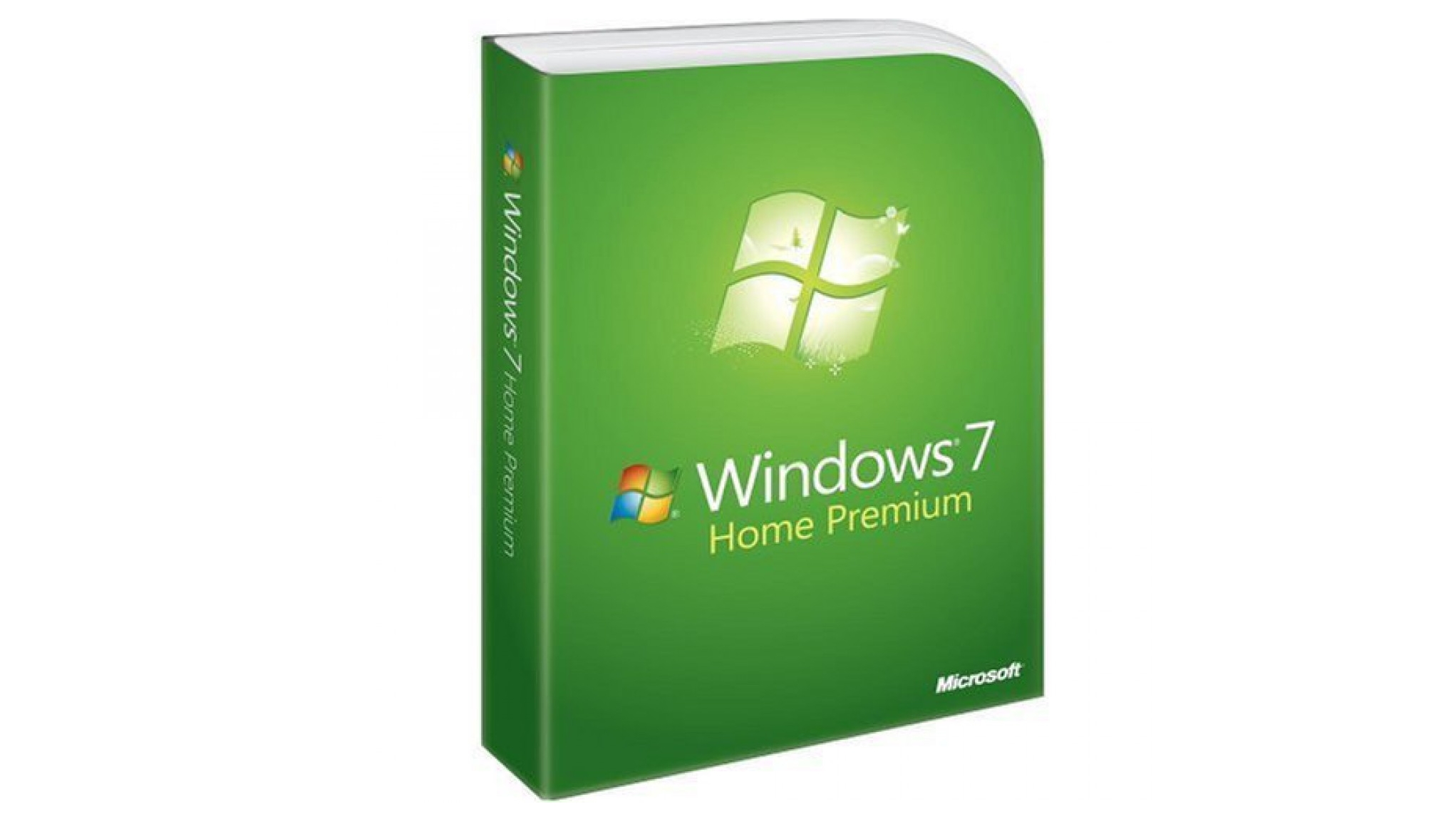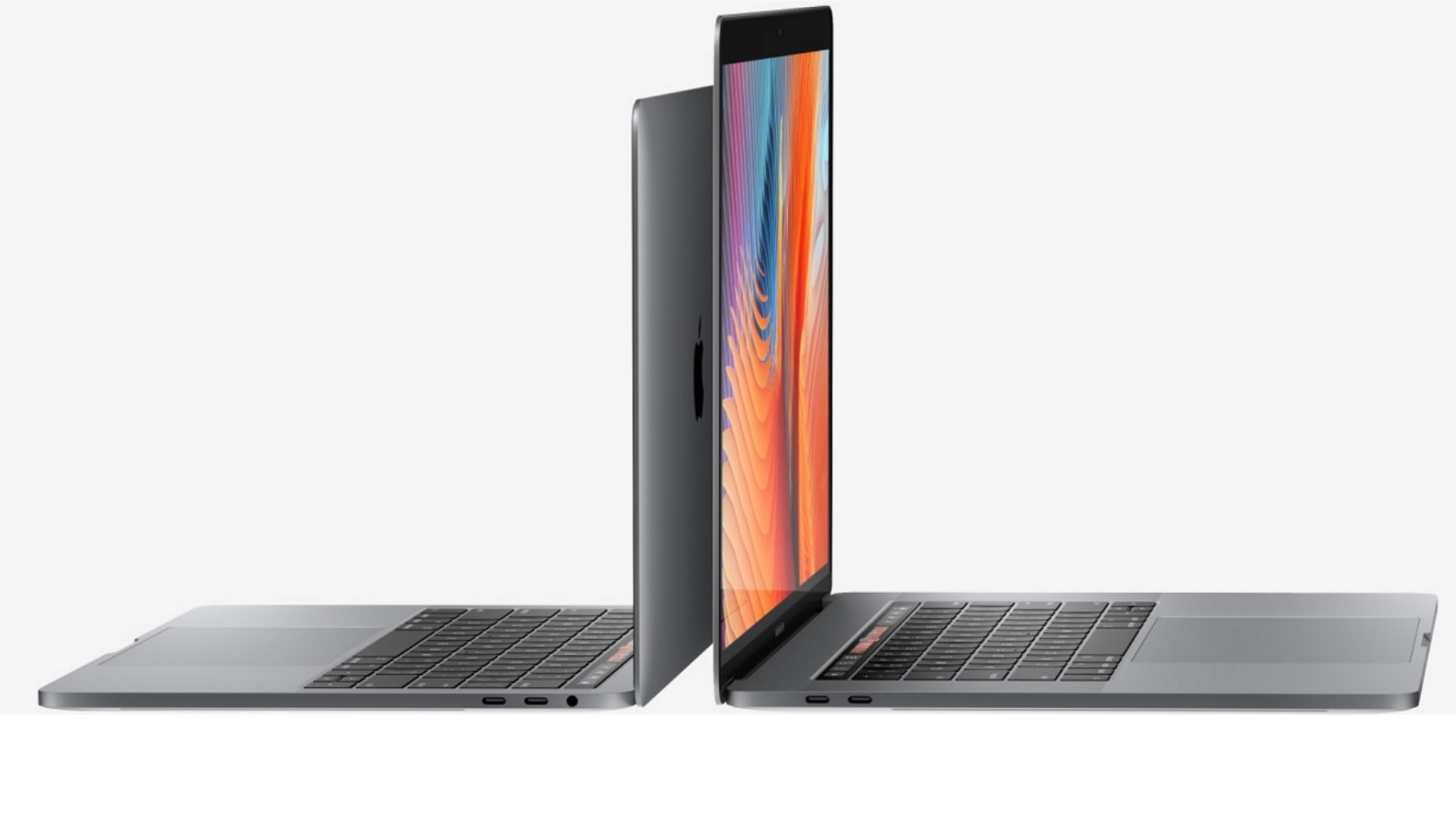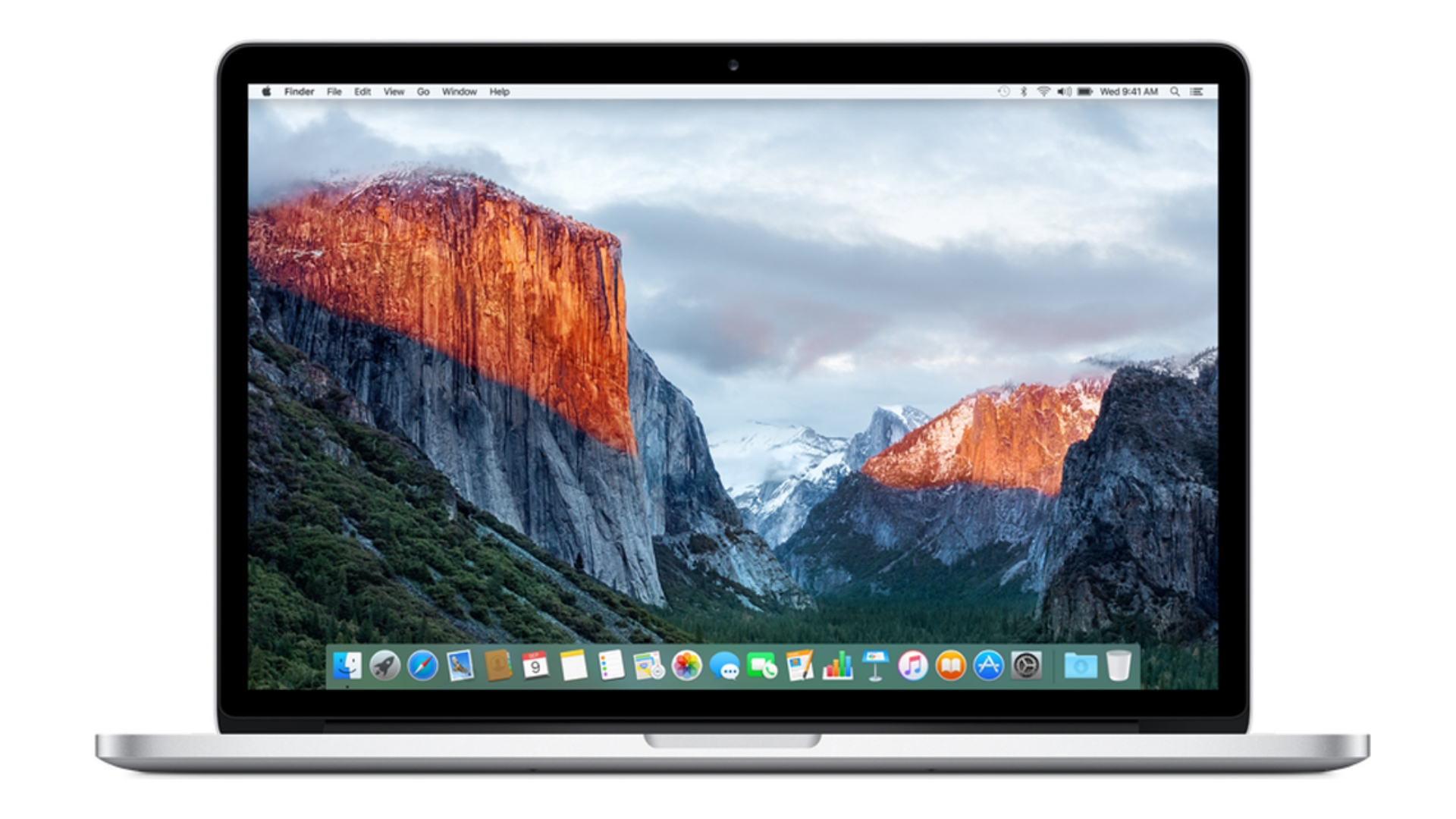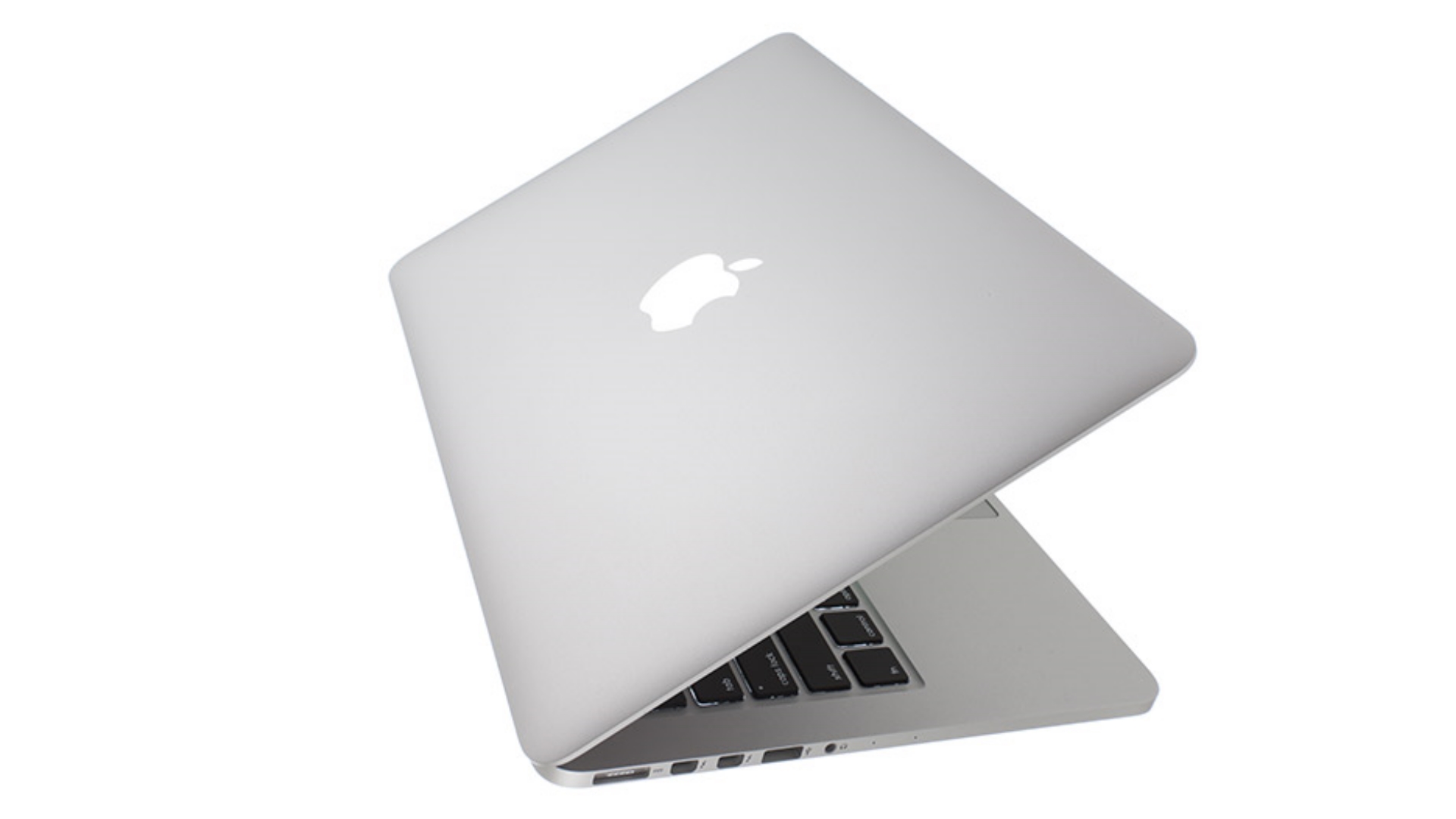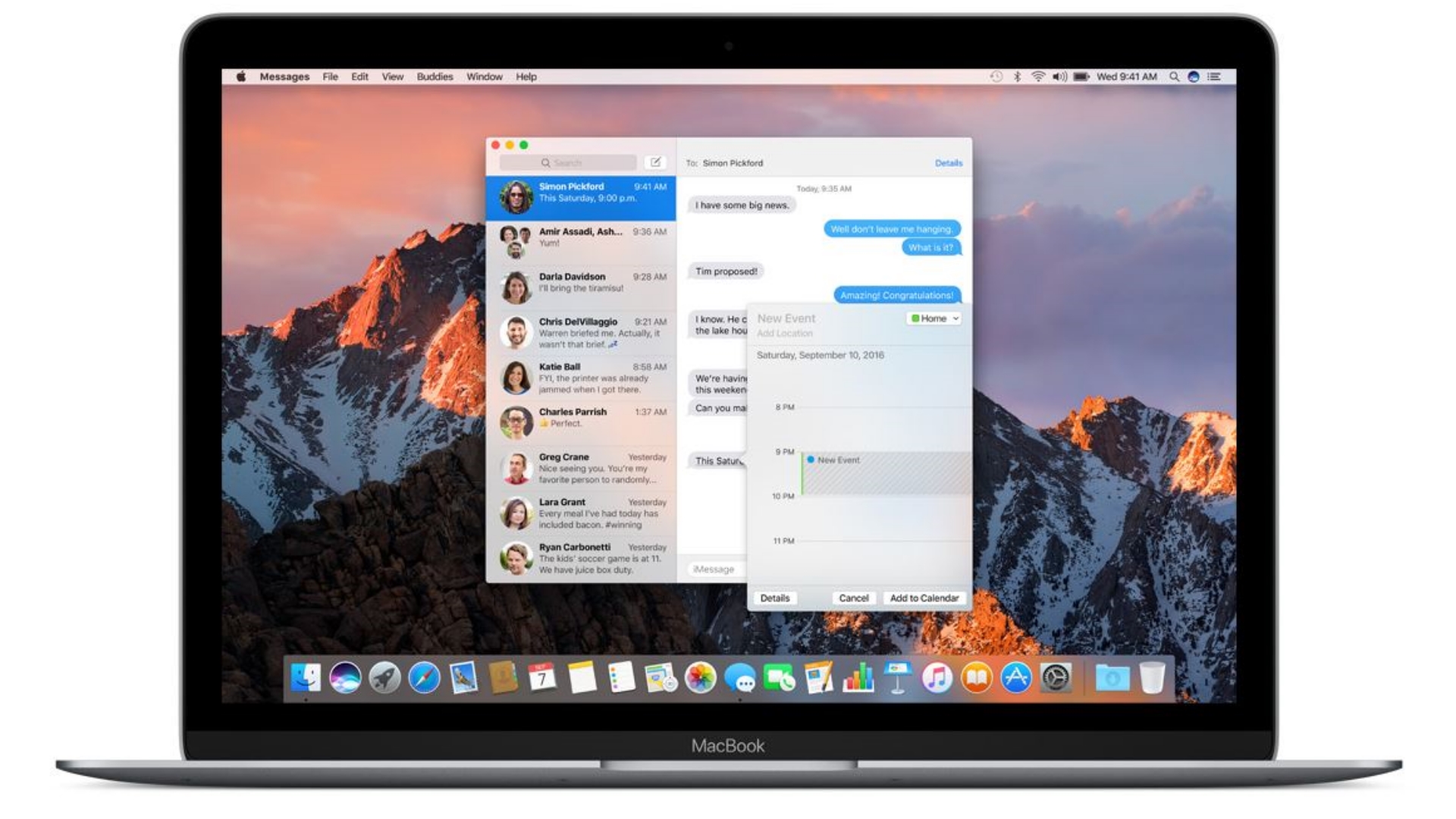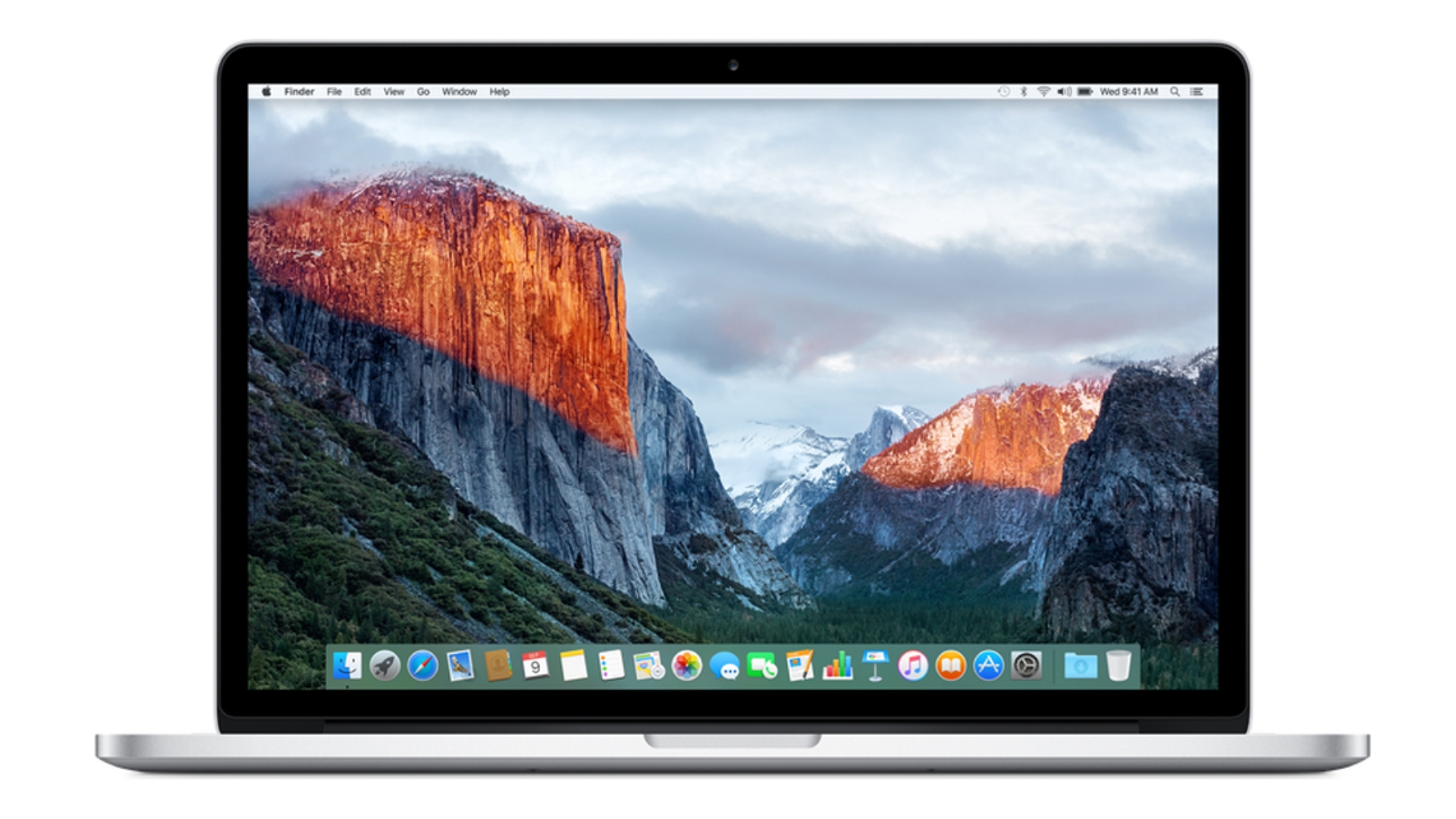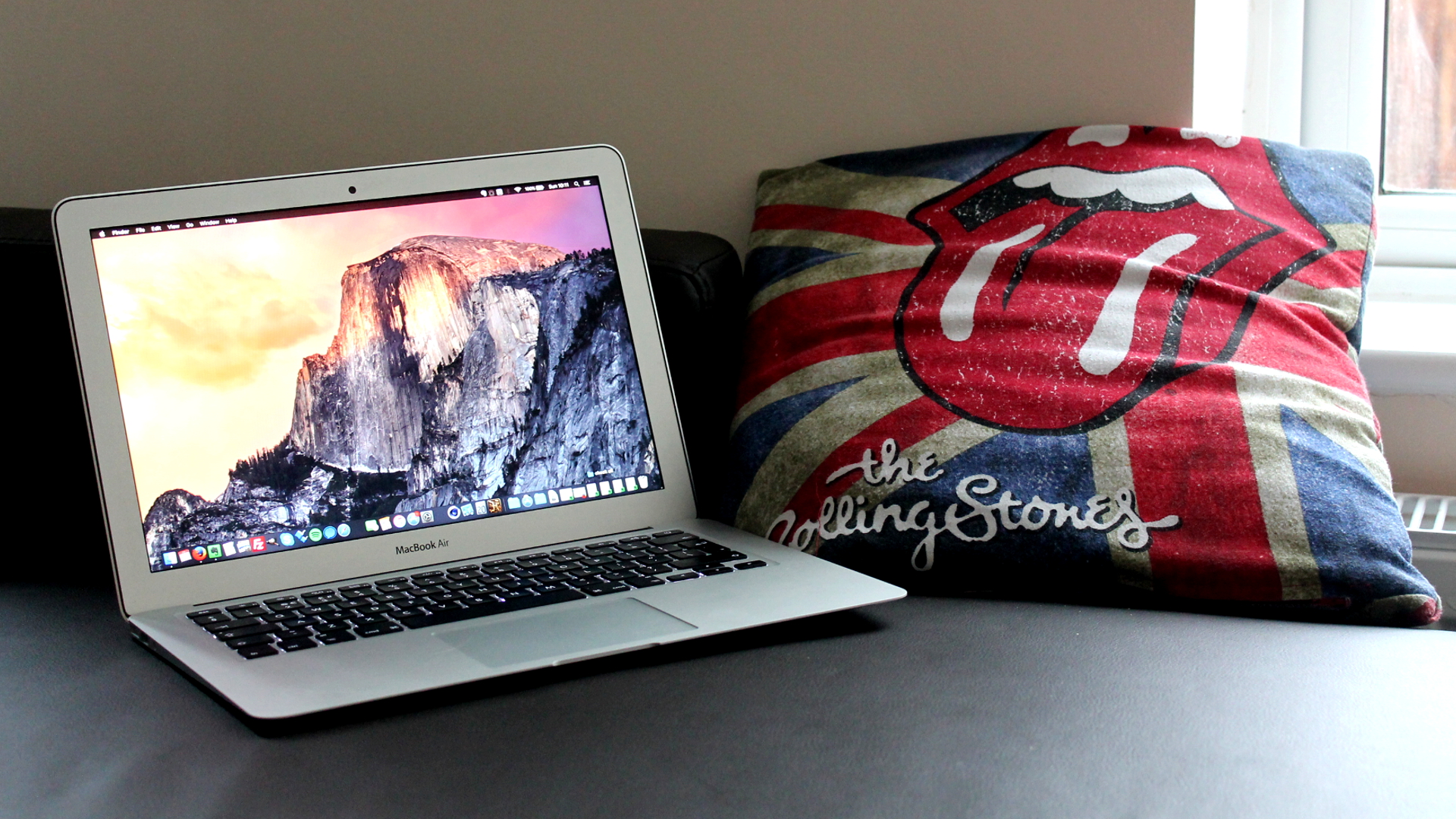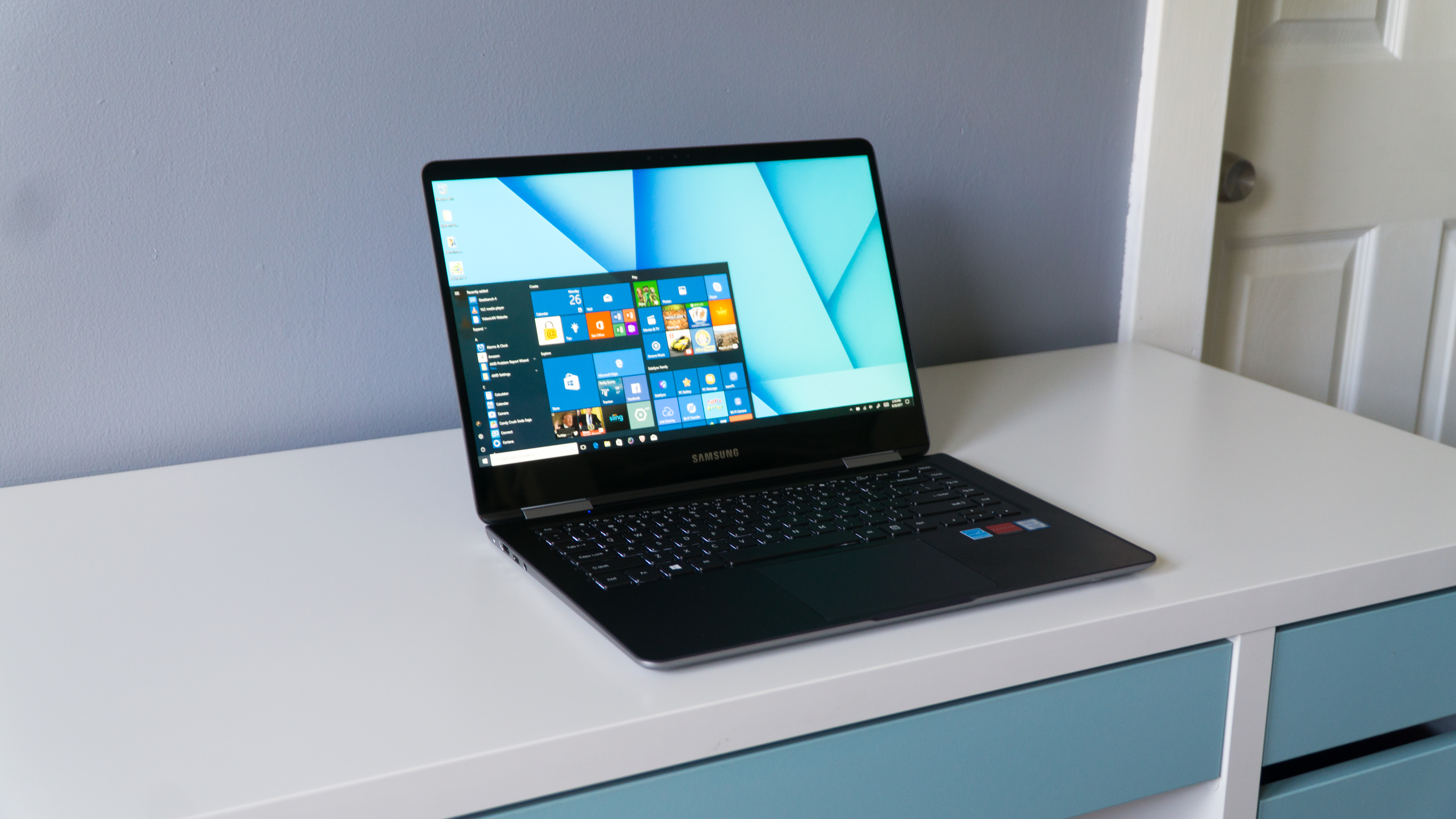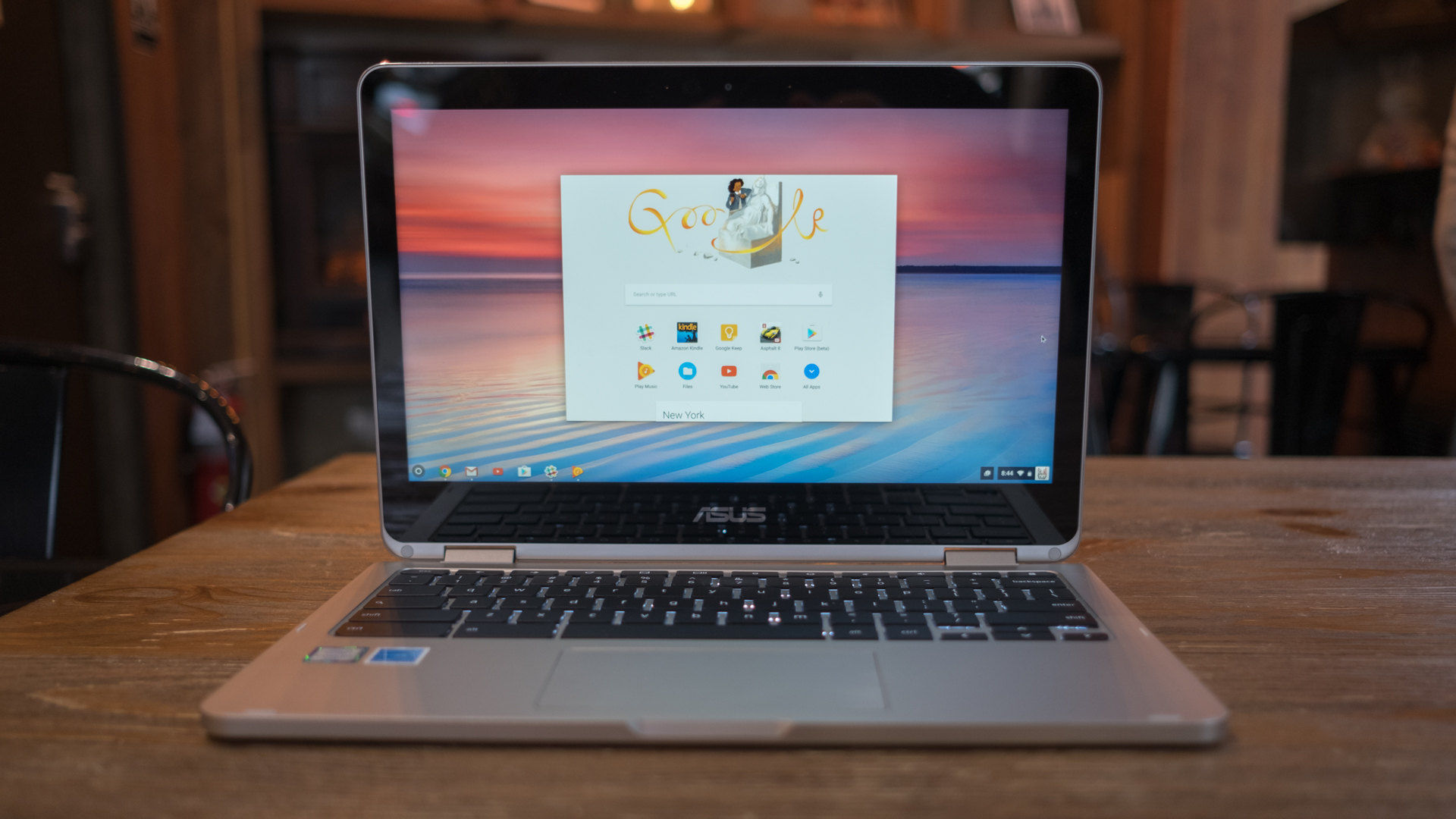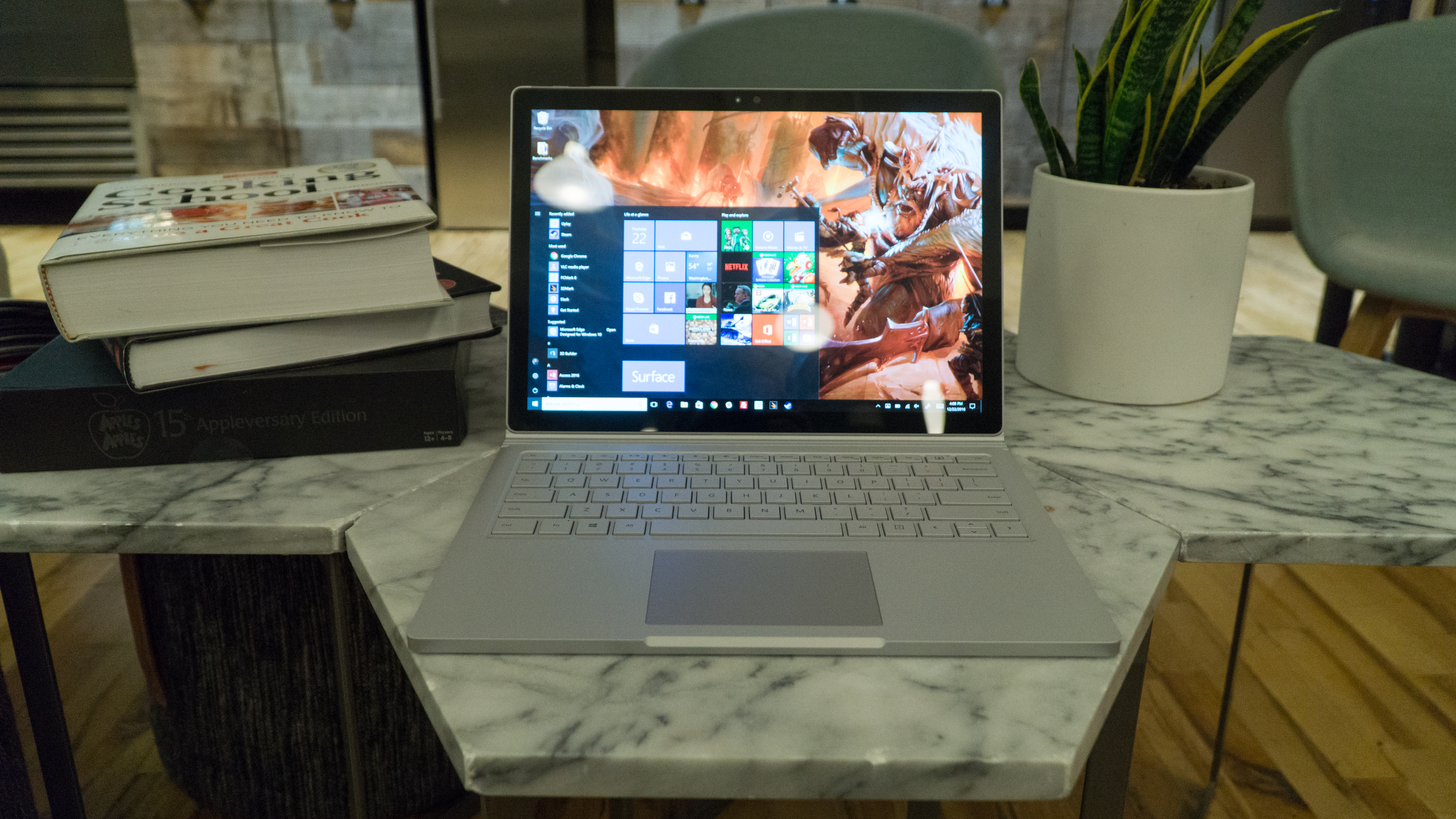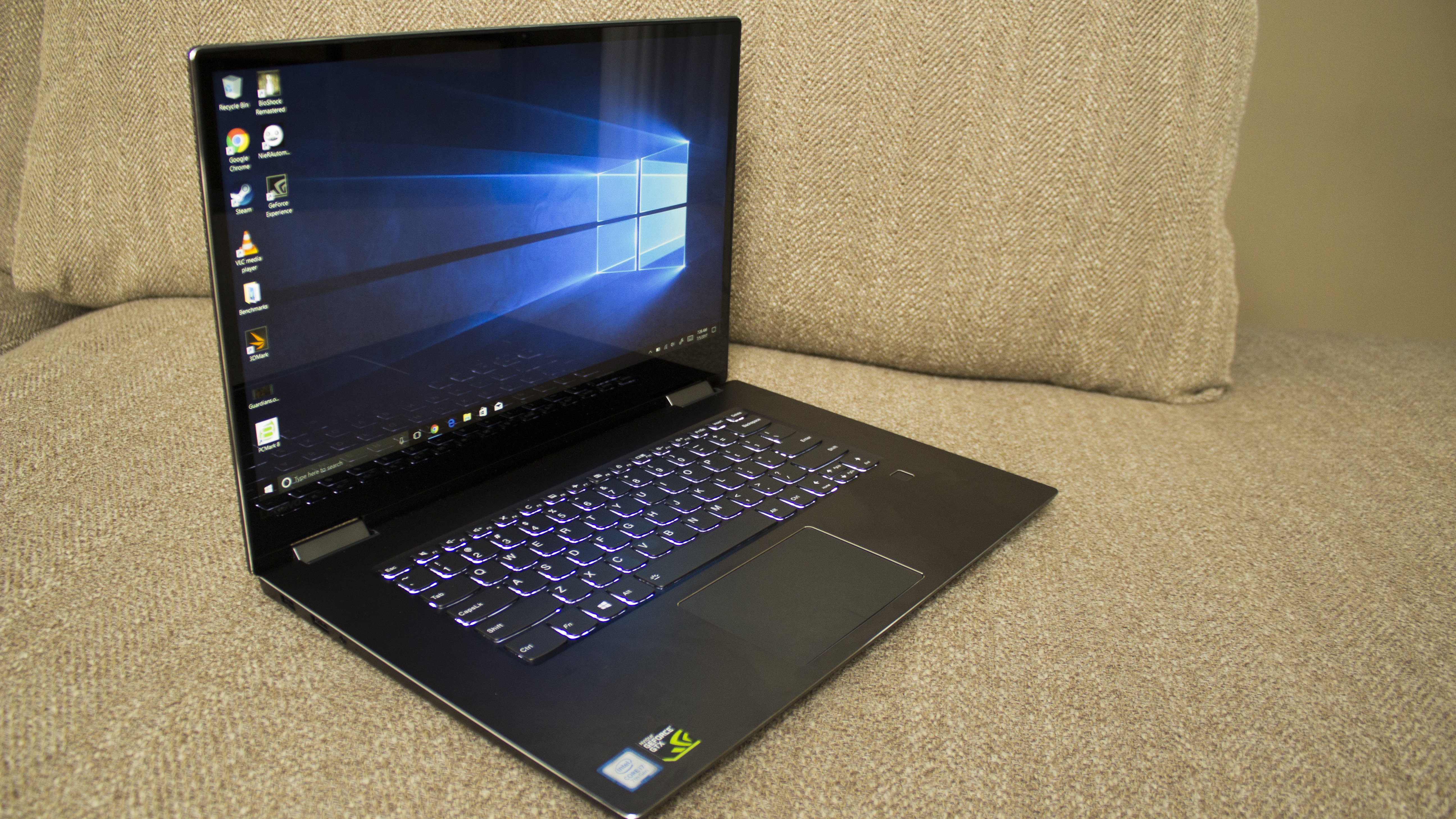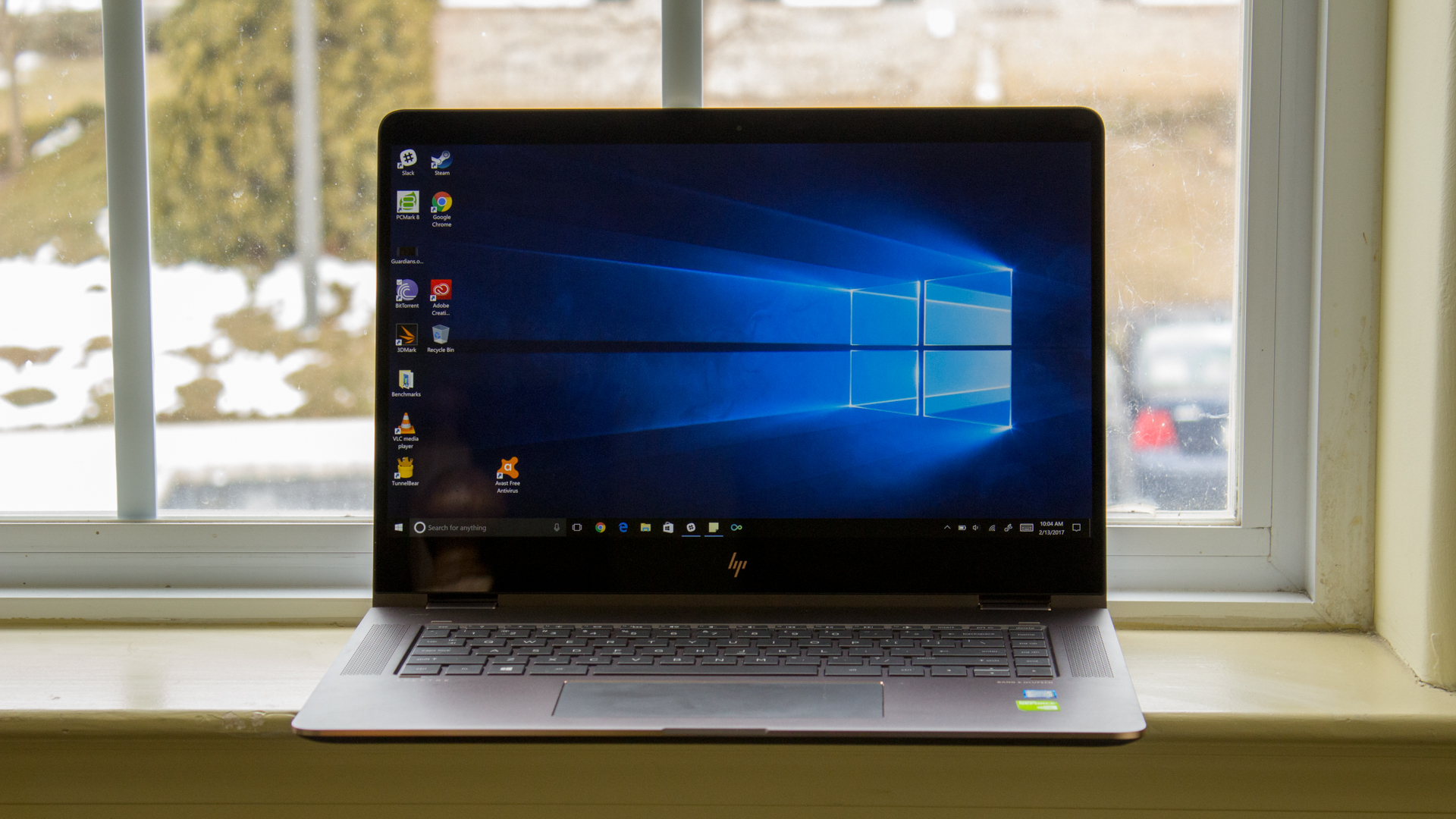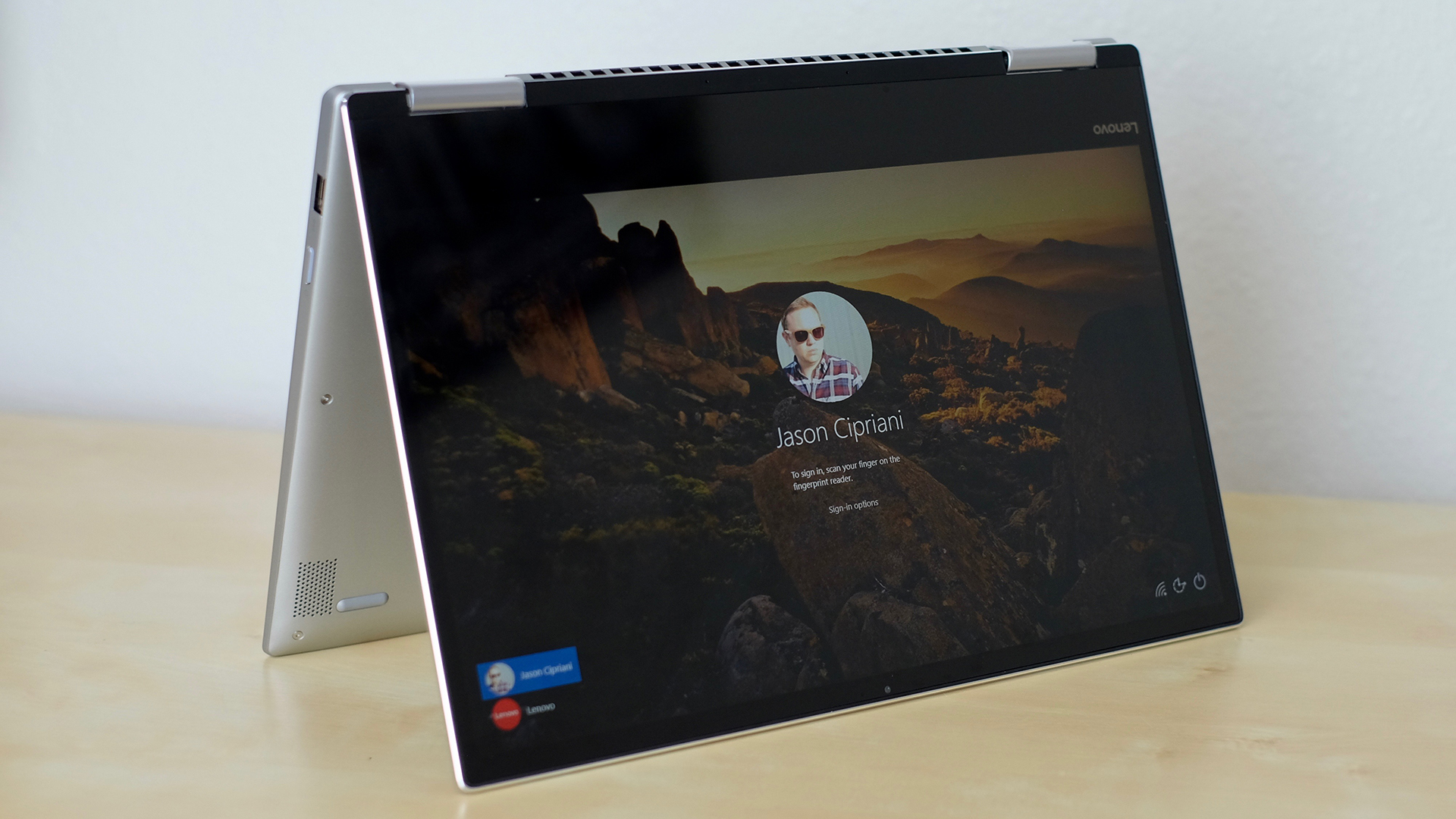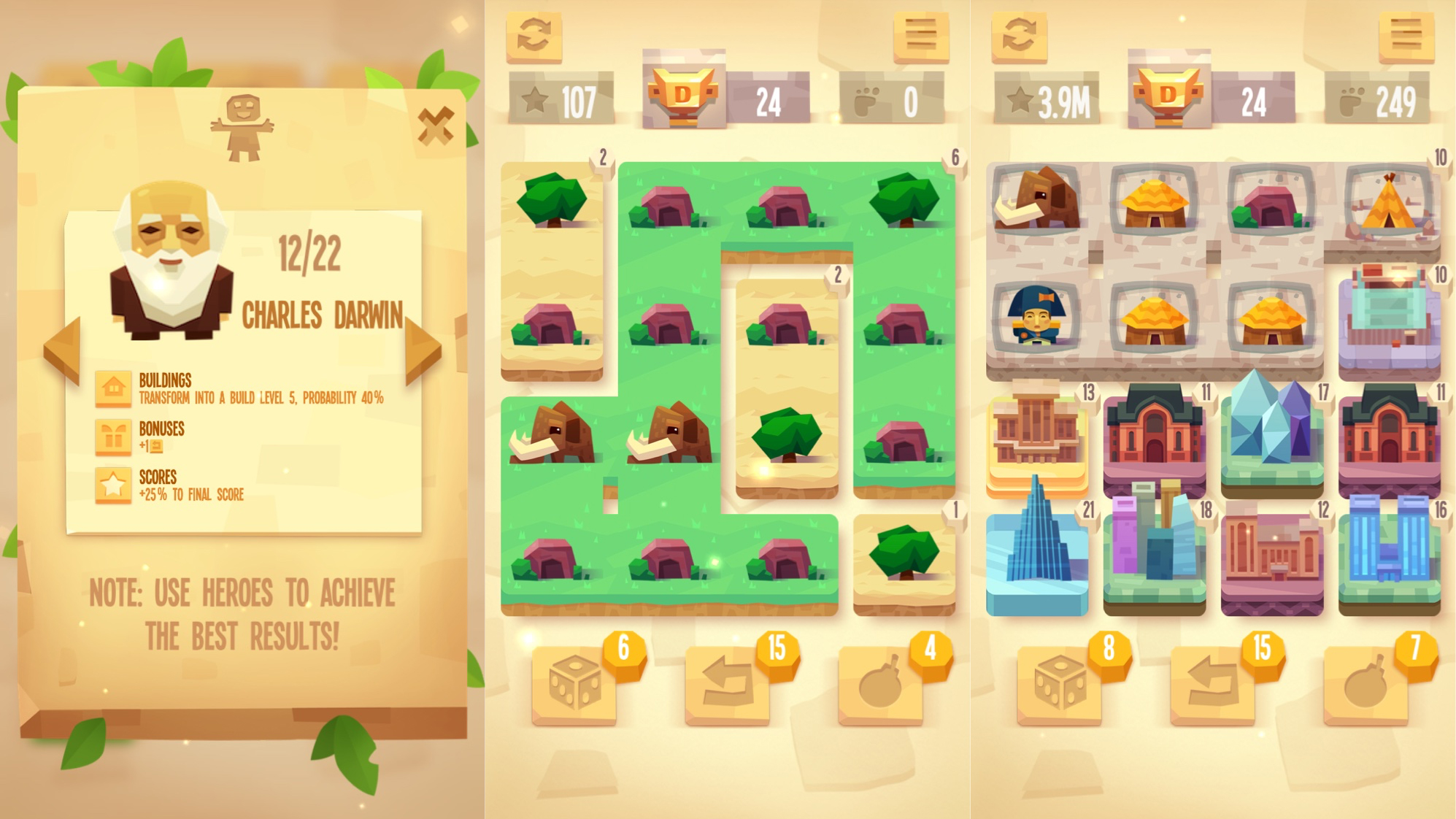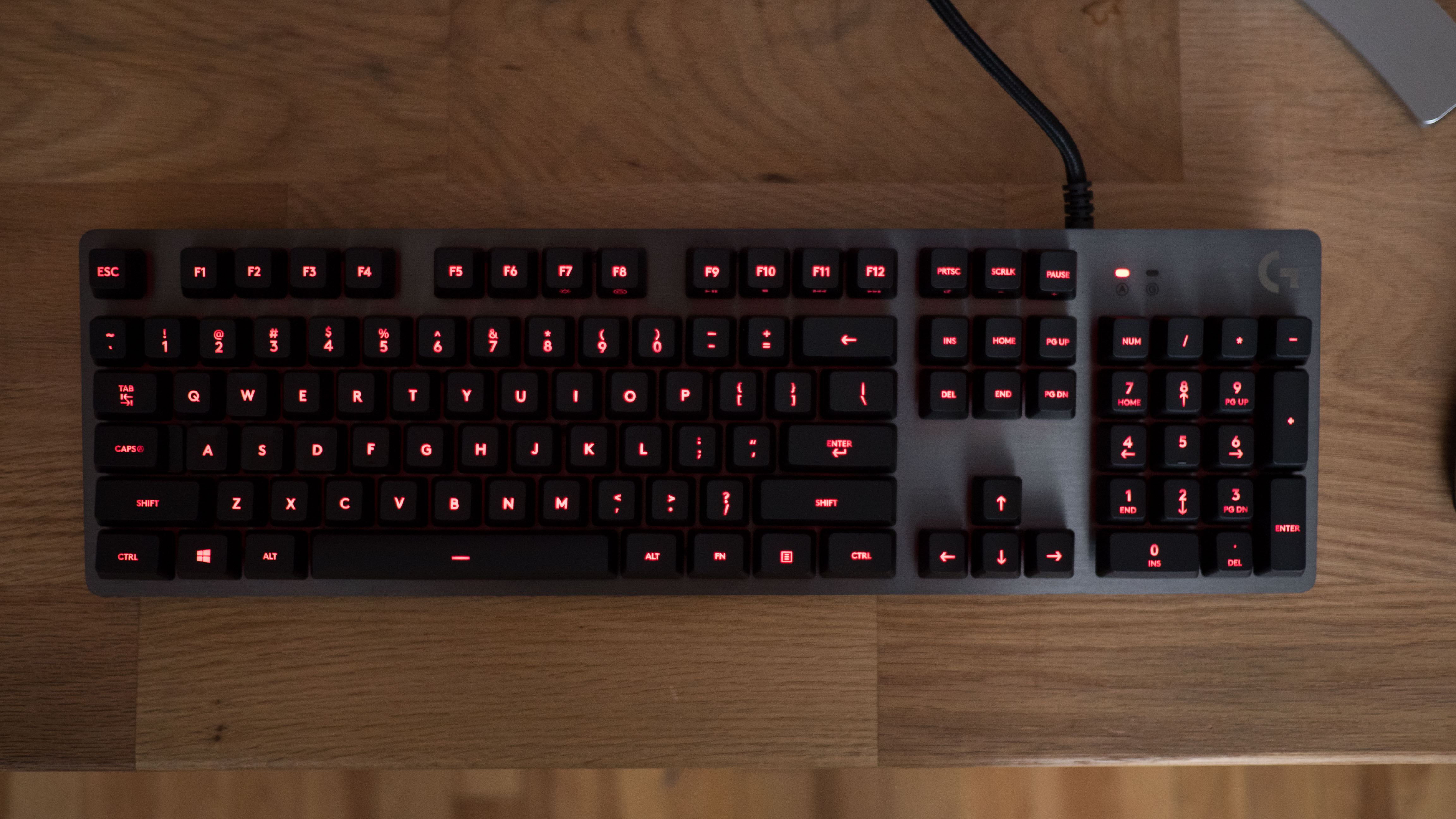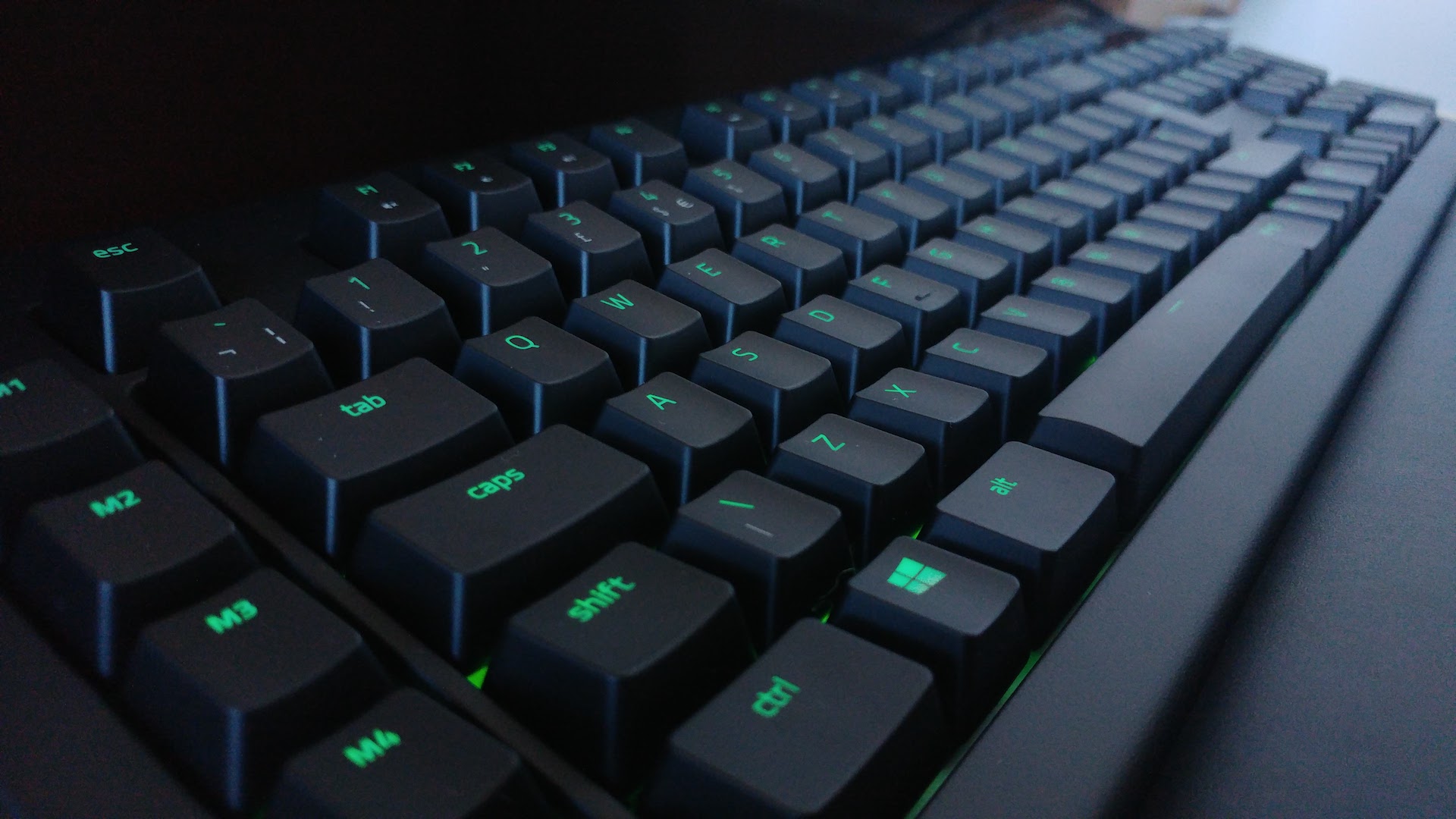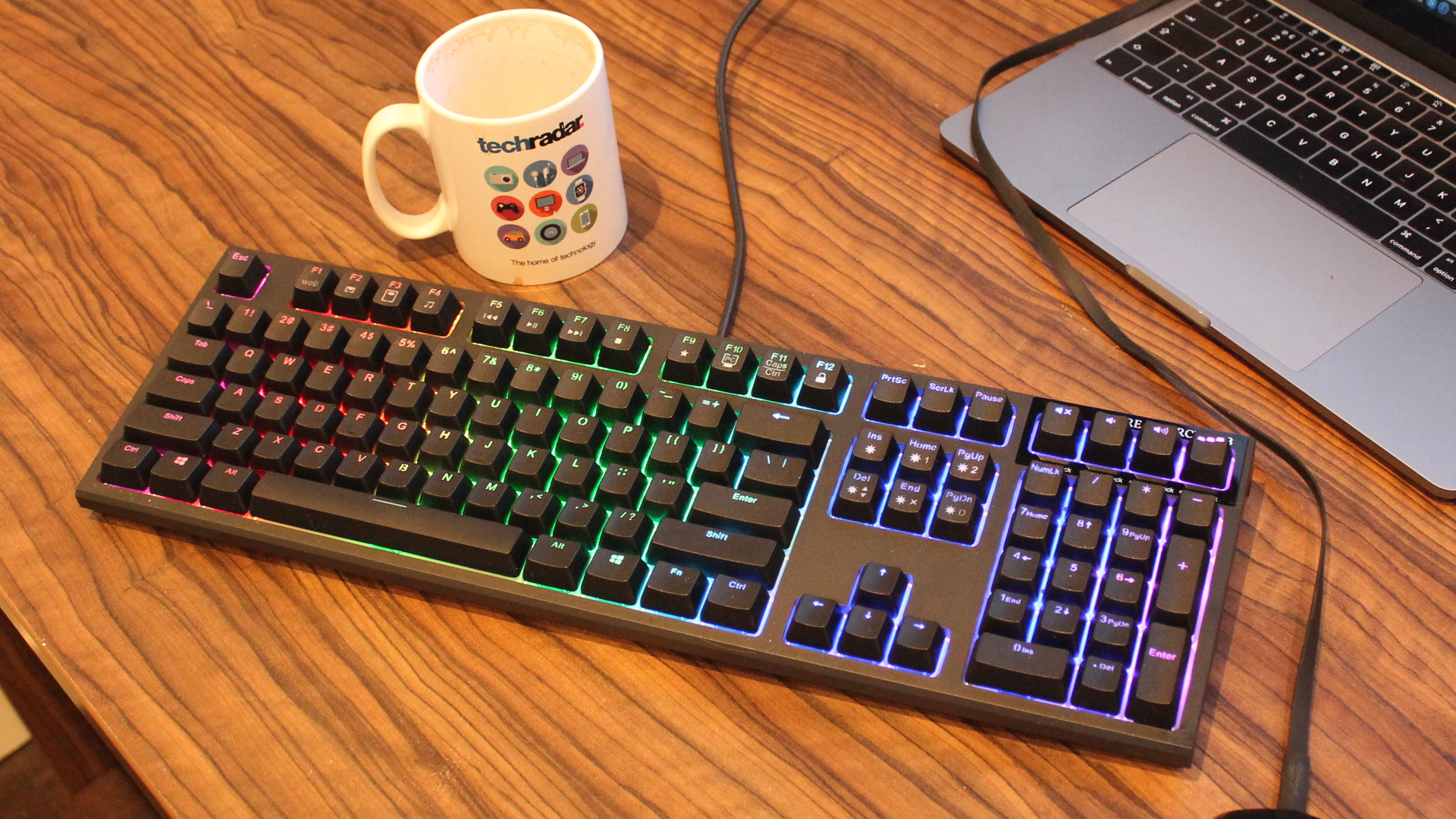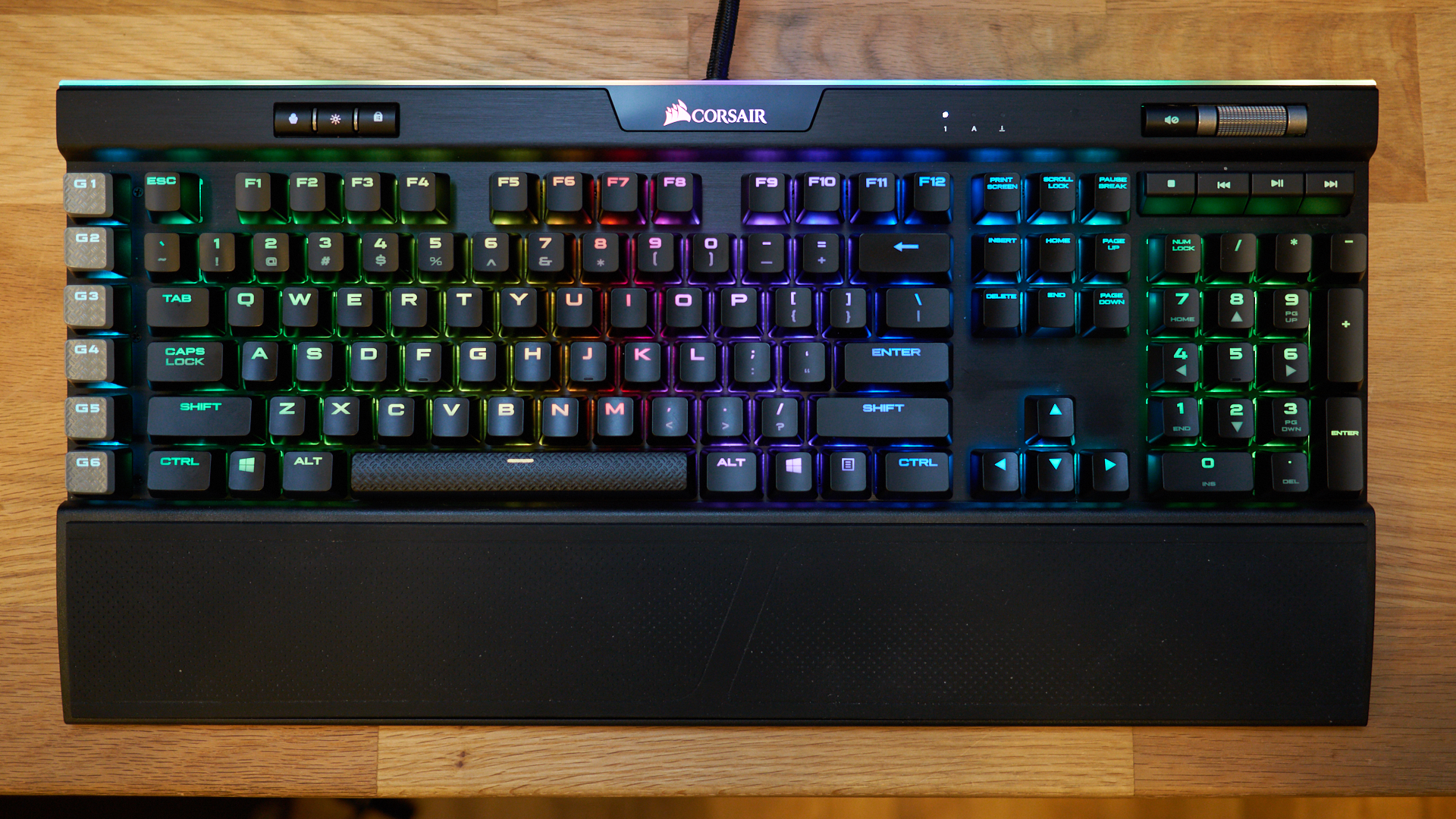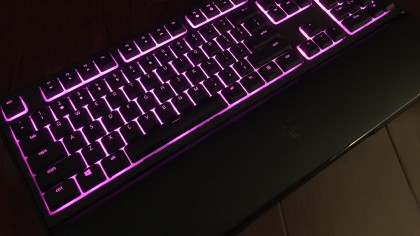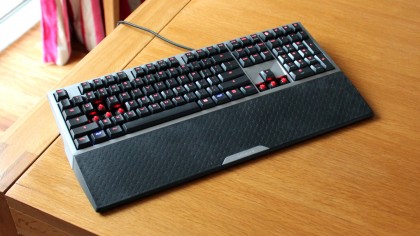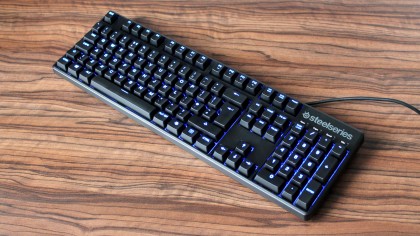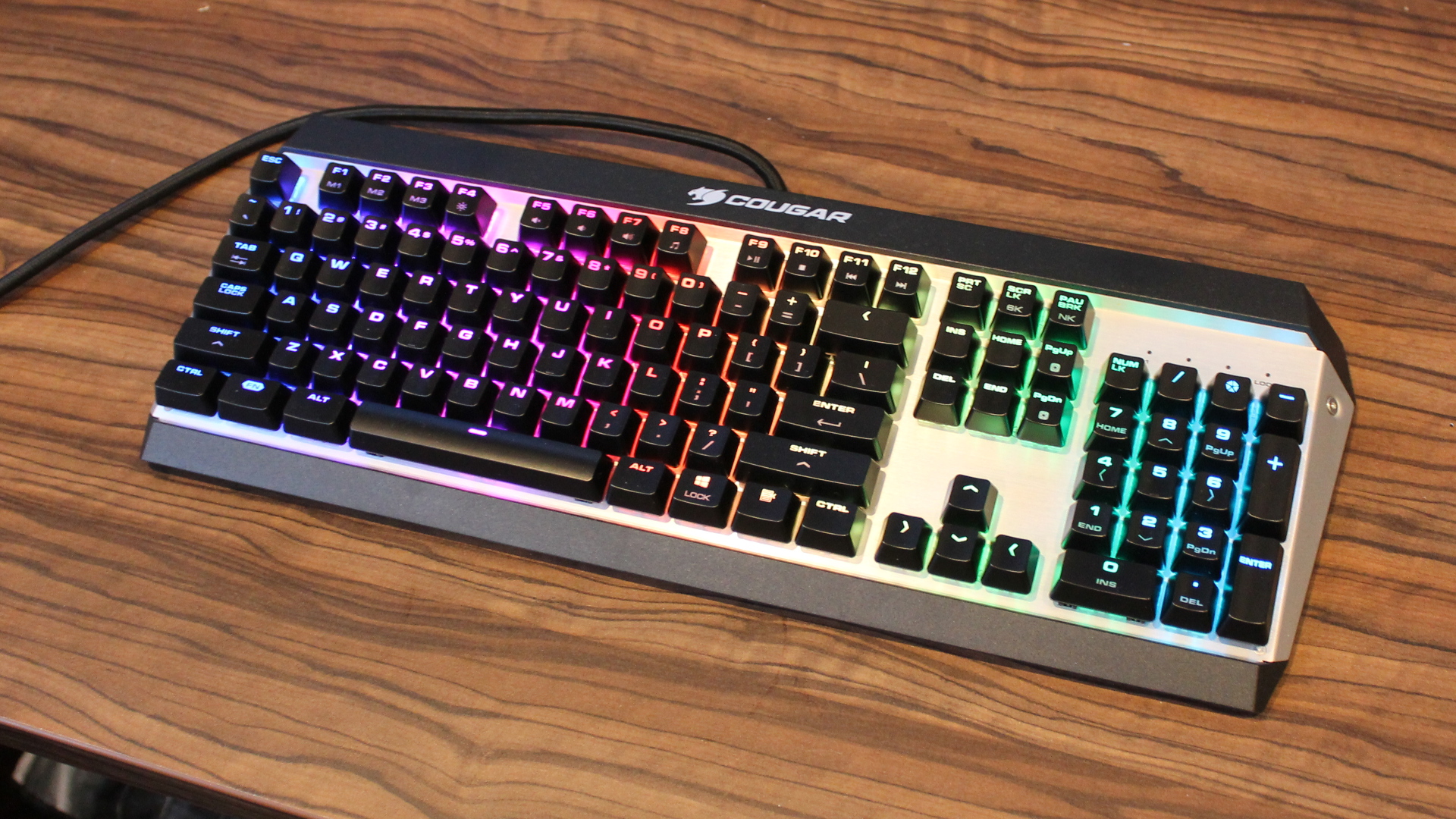It would take approximately 34,506,455 years to play through every single iPhone game on the App Store.
Well.. that number might be fairly inexact, but such is the wealth of titles on the app portal, combined with the depth of some of those on offer, you could easily play happily on your phone for years without getting bored.
The App Store is crammed with gaming goodies to keep thumbs busy, but not all iPhone games are born equal - which is why we've done the difficult job of playing through as many games as humanly possible in order to tell you which are best.

A bit of advice: make sure you think about what kind of game you want, and appreciate that some of them are more 'session' titles and some are those that you'd like to pull out and play in an odd five minutes.
That's important as we're big advocates of people paying for games on the app portal - they help offset some of the free titles that are funded by in-app purchases.
So if you're going to pay £5 / $5 for a game, make sure you've got a daily commute or enough downtime to give it your attention. The beauty of being able to play an immersive game on the move - something that would have been console quality a few years ago - should never be under-appreciated.
Also think about a controller for some titles - while many games don't support an external device, those that do are often brilliant to play without needing to resort to a touchscreen for interaction.
And just to contradict ourselves: free games with in-app purchases are fine, and often give you a great experience without needing to pay up. However, when you get really good at them you'll find that you're constantly told when to stop, in order to regenerate something or get to the next level.
However, if you've decided that you love RPG, fighting and strategy games, and like both options that you can dip into and play for hours, we're here to help. After many trials and tribulations, we arrived at the list you're about to dive into: the best games you can enjoy on your iPhone today.
New: Schattenspiel ($0.99/99p/AU$1.49)
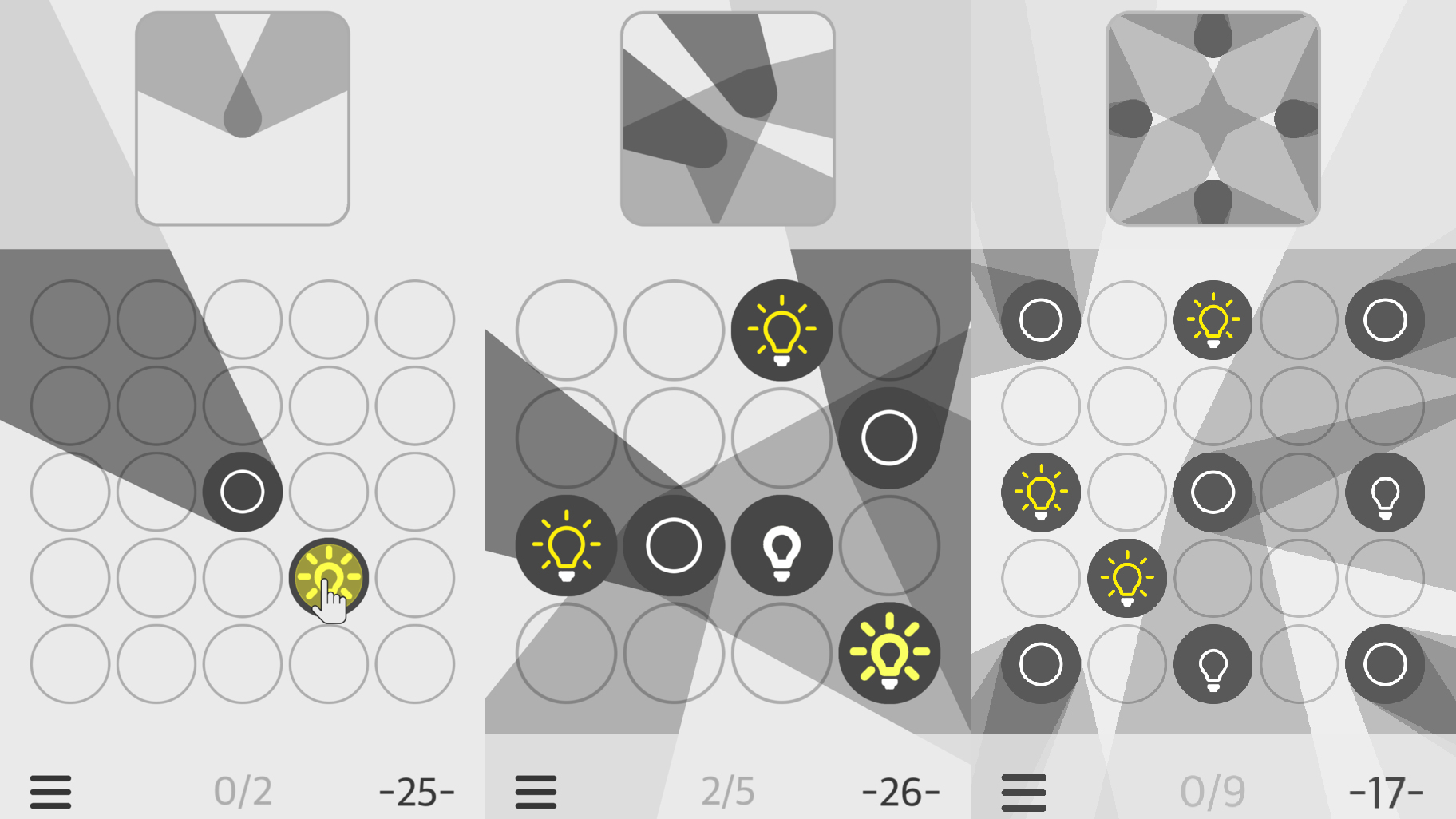
Schattenspiel is a puzzle game about the interplay of light and shadow. Each level is based around a grid of dots, on which pillars and lamps can be dragged around. The aim is to replicate the image shown at the top of the screen by casting shadows using your lamps.
More serene than showy, the game has a visual sleekness and gives no penalties for experimenting. A move limit exists purely as a per-level achievement, but you can also progress by bumbling towards a solution. This means Schattenspiel caters for casual and hardcore gamers alike.
The entire production comes across as a simple concept, executed very well – a cheap, stylish puzzler that should keep you entertained for a good few hours before it’s time to turn out the lights.
- While you're at it, check out the best iPhone apps around
Pigeon Wings is a deranged side-on racing game, featuring wide-eyed pigeons belting along in tiny planes. The backstory involves a rich nutcase aiming to destroy a city by way of a heavily-armed gigantic flying fortress; the birds race it out to decide who gets the chance to stop him.
The game switches things up between strings of races and occasional battles. In the former, you slipstream rivals, bob and weave through the air by tilting your iPhone, and power up your craft through trophies won in-game.
The shooty bits are brief and intense – a nice change of pace, despite the fact you’ll likely be blown to bits several times before claiming victory.
Should you hanker after something marrying the intensity of ALONE… and the frantic racing of Mario Kart, Pigeon Wings is a must – in fact, you’d be bird-brained to miss it.
Wonderputt is what might happen if Monty Python-era Terry Gilliam was hurled through time and charged with designing an iPhone minigolf game. The single 18-hole course is an exercise in surrealism and imagination from the moment tiny meteors smash into the ground to fashion the first hole.
Things then get weirder, with courses eaten into grass fields by cows (who are then whisked away by UFOs), and an impossible waterfall hole that looks like it’s escaped from a colored Escher print.
Fortunately, the game is more than a visual delight – it plays well too. Notably, a ‘smart zoom’ feature ensures you don’t need a magnifying glass to see what’s going on in the visually arresting miniature landscapes.
The only snag is there’s just that one course – but even if you only play it once, this game’s worth the outlay. And for perfectionists, there’s replay value in spotting visual details you may have missed, and getting all of the achievements.
Zen Bound 2 is a puzzle game of sorts, which has you wrap a length of rope around objects, in order to paint them.
That all probably sounds horribly dull, but it turns out Zen Bound 2 is an engaging, unique, and oddly tactile experience.
The blocky objects on the screen effortlessly shift and turn with a flick or drag, gradually acquiring color as the rope encases them, or blows up paint bombs. The rope obeys gravity, too, enabling you to twist your iPhone as you manipulate the challenge in front of you.
The meditative and somewhat noodly feel is further enhanced by a lengthy soundtrack, and the remastered take released in 2017 ensures the game looks pin-sharp on every size of iPhone. So although Zen Bound 2 might be a game that’s been knocking around for years, it manages to remain distinctive and thoroughly modern all the same.
Linelight is a serene, smartly designed puzzle game set in a universe of lines. It vaguely resembles a stripped-back take on Tron, or perhaps a circuit board diagram as reimagined by a graphic designer with taste. Your task is to help a white line find its way through dozens of pathfinding puzzles.
Movements are controlled by a virtual stick, which is one of the most effortless and elegant in any iOS game. The puzzles are similarly graceful and ingenious, gradually introducing new mechanics.
These include enemies that amusingly bob along to the chill-out soundtrack’s beat. Said foes are colored lines that kill with a single touch; but when carefully directed, they trigger switches to help you across otherwise impassable divides.
It might not be the longest experience on iOS, but Linelight deserves a place on your iPhone, due to being an engaging, beautiful experience, and a perfect example of how minimal design can have a soul.
Sidewords is a word game with a new twist. Each single-screen puzzle has a grid with words along the top and left-hand edges. You use letters from those (at least one from each edge) to create each new word.
On selecting a letter, a line shoots into the grid; where lines from the left and top edges collide you get solid blocks, which display the words you create. Blocks can at any time be tapped to remove them.
The aim is to fill the grid with these blocks – simple early on, but not when you’re staring at a seven-by-seven grid annoyingly full of gaps. At that point, the devious nature of Sidewords becomes apparent.
But this game’s nonetheless also forgiving and relaxing – there’s no time limit, and the vast majority of puzzles are unlocked from the start. There’s replay value here, too, despite the static set-ups, since for each puzzle you can save a solution, clear the grid, and try to solve it in a different way.
Mini Motor Racing is a top-down racer featuring tiny vehicles that blast about twisty-turny circuits. They auto-accelerate, so you’re left with steering, and periodic use of a turbo that rockets your vehicle forward a few car lengths, leaving you unable to steer in the meantime.
From the off, Mini Motor Racing is frenetic. The tracks are claustrophobic, and the cars respond (and even sound like) remote controlled vehicles – albeit ones seemingly driven by psychopaths. Once you’re a few dozen races into the game, it seems your opponents are keener on smashing into you than winning.
That grumble leaves Mini Motor Racing languishing in the slipstream of the best top-down effort on iPhone, Reckless Racing 3, but it still manages a podium finish. And that’s because it’s packed full of content, has a great multiplayer mode, and in its ‘remastered’ 2017 form looks stunning.
Idioctopus features brainless lovesick octopus couples desperate to be reunited. One lurks somewhere in a single-screen maze of walls and hazards. It’s your job to direct their other half in a manner that doesn’t turn them into a seafood snack for a lurking predator.
Your eight-legged lover ambles along automatically, and always turns right when possible. You can therefore to some extent predict their movements, and redirect them using draggable arrow tiles. With its bright colors and noodly guitar soundtrack, it’s all quite relaxing and sedate.
And then you notice the achievements, and the fast-forward button. These are an extra challenge for those who want higher-speed puzzling, having you remember your solution and play it out at speed in the fewest possible moves. It’s a clever and entirely optional twist, transforming Idioctopus into two games in one.
Yankai’s Peak is a minimal puzzle game based around pyramids that trundle about platforms comprising triangular grids.
The aim is to use your blue pyramid to nudge and spin colored pyramids to pre-defined resting places. It sounds simple. It really isn’t. Yankai’s Peak is like the crate-pushing classic Sokoban reimagined by a triangle fetishist who also happens to be a sadist.
Right from the start, you’ll need to rewire your brain to understand how wildly different movement is when spinning pinned pyramids about an axis, or using one to shove several others ahead.
Even early levels can baffle, and the later ones require serious planning and brainpower, even when taking into account the game’s unlimited undos button – which you’ll use often.
But this one’s worth sticking with. It’s elegant and clever, and you’ll feel like a genius when cracking a puzzle you’ve been stuck on for days.
Ellie & Max is a landscape-twisting pathfinding puzzle game that in some ways echoes Monument Valley in its propensity for visual illusion. Here, tiny isometric worlds can be spun, but always appear side-on when stationary.
In two dimensions, previously impassable gaps may suddenly disappear. Your aim is to reunite pet dog Max with his owner, Ellie, within the fewest ‘spins’ and steps possible.
Visually, the game’s a treat, and over time you can collect all kinds of costumes, transforming Max into anything from a wolf to a polar bear. The puzzles are smartly designed too, gradually increasing in difficulty. The lack of an undo is a pity though, for when you inevitably leap into a situation you can’t recover from.
The game does at least provide checkpoints, so you never need start from scratch when halfway through one of the more head-scratching challenges. Quite why Ellie gets lost so often, though, we’ve no idea; perhaps she’s the one that should be on a lead.
VVVVVV is a love letter to classic games. Its visuals and soundtrack recall the Commodore 64, and its platforming action (each single-screen challenge also being amusingly named) echoes much-beloved 1980s fare, like Manic Miner and Bounty Bob.
However, VVVVVV’s speed and fluidity are thoroughly modern, as you zoom about a huge space station, trying to locate lost crew members. And unlike comparatively stodgy platformers of old, VVVVVV doesn’t have you leap over hazards – you instead invert gravity to flip between ceiling and floor in an excitingly disorienting manner.
The spike and alien-infested twisty corridors awaiting you require serious dexterity to conquer. Fortunately, death is not the end, because you get unlimited lives, and there are frequent checkpoints.
And in another nice nod to the old-school, even the 4:3 viewing area works in the game’s favor – you can control your character by swiping and tapping in black bars at the edges of your display, rather than covering up his on-screen exploits with your thumbs.
Coming across like an auto-scrolling stripped-back Lemmings, Micro Miners features a team of excitable, tiny miners that toddle along tunnels you dig with a finger. On encountering a deposit of gold, silver or coal, they’ll gleefully hack it to bits with their tiny pickaxes.
At first, this all feels noodly and simple, but Micro Miners soon bares its teeth. You must commit each level’s layout to memory, in order to navigate underground hazards, often splitting and rejoining your little auto-running-team.
Before long, you’re carving complex pathways through the dirt, so you can grab large deposits and huge gems, circumvent lava, and avoid ferocious giant worms that eat anyone daft enough to stray into their path. The result is a fun, sometimes chaotic, and unique iPhone gaming experience.
It might have a chill-out jazzy soundtrack and cute visuals, but Fish Fly Fever is a tough arcade game determined to make your thumbs – and by extension all your other parts – feel like gaming buffoons.
In its tiny single-screen universe, a little fish fly scoots about, emitting a trail. When its bubbles hit another creature, that creature is transformed into a gem. Grab those and your score goes up, periodically sending you into a ‘fever’ mode (bigger trail), or pitting you against a boss (which will almost certainly kill you).
It’s really tough. Despite the simplicity of what’s required and the controls (rotate left or right), you’ll initially die before you grab half a dozen gems. But persevere and, like the best arcade games of old, you’ll slowly master Fish Fly Fever. Over time, it may become a bit repetitive, but again like classic arcade titles, this one’s perfect for the occasional blast.
Games creator Zach Gage is seemingly on a mission to reimagine all those puzzle games that used to languish only in newspaper pages. With Typeshift, you get something that approximates anagrams smashed into a crossword.
But unlike on paper, the word grid here isn’t static – you drag columns to try and form words in the central row. When every letter has been used, the puzzle is complete.
For free, you get a smallish selection of puzzles, but many more are available via various IAP. If you’re at all into word games, you’re likely to devour them all.
The best of them roll another aspect of crosswords into the mix – cryptic clues. In these brain-benders, you can’t almost brute-force solutions by dragging the columns about and finding weird words – you must figure out what a clue means, eke it from the grid, and after a few of those probably go for a little lie down.
If you’ve played Reigns, you’ll know what to expect in Artificial Superintelligence. Only rather than trying to juggle a demanding kingdom, Artificial Superintelligence finds you dealing with the press and investors in Silicon Valley as you build the world’s first sentient supercomputer.
Decisions are made Tinder-style, with a left or right swipe. You hire and fire, interact with interested parties, and occasionally obliterate the world when it turns out the AI is in fact psychotic (as users of the developer’s CARROT apps will already be very aware).
The game’s visual styles clash a bit, and the ‘decision switch’ is fiddlier than Reigns’ full-screen swipe, but there’s plenty to like here. If you’re a fan of oddball casual adventure puzzlers, you’ll not rest until you’ve found all 52 endings, including one where your cat enslaves humanity. Meow!
A friendly whale beckons a shipwrecked pirate to leap on its back. So begins their joint adventures, in Run-A-Whale, which is perhaps the iPhone’s most gorgeous endless runner.
Really, endless swimmer is more like it, seeing as you’re a massive aquatic mammal speeding through the sea. You hold the screen to dive and release your finger to surface and leap, grabbing coins in a manner akin to Jetpack Joyride in reverse.
But Jetpack Joyride was never this eye-dazzling, and Run-A-Whale is packed with wonderful moments, from soaring through the air after being blasted from a cannon, to zooming along as a volcano erupts in the distance.
Occasionally, the game irks with its demands – obstacles in succession you have little chance of avoiding, or unskippable tricky missions – but for the most part this is a gem that’s not to be missed.
This neon-infused one-thumb single-screen shooter has you fire orbs into the void. When an orb stops, it expands into available space and is given a number. Hit it with subsequent orbs and the number decreases until the orb explodes, sometimes starting a chain reaction that obliterates its neighbors.
Your main concern is an orb returning over the line of death above your cannon. Orbital therefore rapidly becomes a tense battle of nerves, accurate aiming, and space management.
Whichever of its three varied modes you try, it’s a gripping game, and there’s also a same-device two-player mode that pits you against a friend.
In this decidedly minimal take on platform gaming, you nurse a trundling square around the insides of a cube, aiming to gobble up all of the other colored squares. This would be simple enough if it wasn’t for gravity rather misbehaving throughout.
In pocus, you see, gravity switches depending on where you fall and the face of the cube you’re currently positioned on. This means walls abruptly become floors, and previously innocuous slabs of black become traps you cannot escape from.
There are 60 levels in all, gradually intensifying in difficulty as you progress. Each of them’s a miniature gem.
Part game, part exploratory toy, Vignettes is all about the joy of discovery. It’s based around colorful objects suspended in the air, which you manipulate by way of a finger. Spin them through a flat edge and they instantly become something new.
This slice of magic initially mesmerizes, but the trick doesn’t wow for long. Fortunately, Vignettes is more than an interactive animation. Pathways between objects are more complex than they first appear, and hide all kinds of secrets.
During more contemplative moments, there’s plenty to discover, too – many objects respond to taps and swipes. Also, unlike ostensibly similar fare such as Shadowmatic, Vignettes seems ideally suited to the smaller screen of an iPhone rather than demanding the larger play surface of an iPad.
Float initially appears to be something of a meditative arcade game. You tap nearby a lily to propel it through minimal landscapes, its movement akin to sliding atop a sleek ice-covered surface.
The flower is fragile – any collision with the rocks that are dotted about, or mysteriously spinning bits of wood, and it disintegrates, forcing you to restart from the most recently passed checkpoint.
In time, you realize there’s an edge underneath the tranquility: the subtle scrolling of the world that urges you onwards; the increasingly tricky sections that prove demanding regarding the precision of your taps. The journey is ultimately fairly short, but it’s satisfying in trying something different, and in its bite-sized nature that’s ideal for mobile.
To differentiate itself from a slew of Boggle and Scrabble clones, word game AlphaPit tries something a bit different. Although the aim is, as ever, to clear a grid of letters, there’s more to AlphaPit than simply dragging lines through the grid, making words to remove tiles.
There are bonuses, which you can use strategically, to shuffle letters, or blow to pieces a tile that’s particularly annoying you. Spare letters also lurk, which can be swapped in at an opportune moment.
Perhaps most importantly, though, AlphaPit isn’t random – instead, you get 200 predefined levels to work through. This proves rewarding, transforming the experience into a set of puzzles you know you can beat – if only you can figure out the solutions.
In Edge, you control a cube that finds itself within a minimal geometric clockwork universe. As the cube trundles about, the blocky world frequently shifts and changes, often thwarting your attempts to find the goal. When you do finish a level, Edge dispassionately awards you a rating, which will probably be rubbish.
If you’ve got steely resolve, you’ll try again to see how rapidly you can speed through each isometric wonderland. If not, you’ll still have a great time exploring the dozens of varied worlds, regularly being surprised at how much imagination can be packed into landscapes comprising only cubes.
And if in either case, you exhaust Edge’s levels, you can start all over again in equally impressive sequel Edge Extended.
Breakout – or ‘Pong for people with no friends’ – is one of the oldest videogames around. Still, the ‘use a bat to whack a ball at a wall of bricks’ mechanic is entertaining enough that game creators keep offering their own unique spin on it. And breakforcist is certainly unique.
Here, a wall of bricks slowly marches down the screen. Said bricks primarily comprise possessed waffles and weaponized breakfast food power-ups.
The manic nature of the production feels borderline unhinged, packing the screen with colorful explosions as you blast angry ghosts with a giant pancake ball, and use bacon lasers to hack back the tasty wall of doom. It’s ideal one-finger iPhone gaming fodder.
The thinking behind Stagehand is to flip platform games on their head. Instead of controlling the character, you control the stage. So as your little chap automatically ambles along, you drag chunks of landscape to give him a clear path, ensuring he doesn’t smack into a wall.
From a visual standpoint, Stagehand feels like the sort of thing Nintendo would be happy to call its own. There’s also a superb soundtrack that tinkles away as you grapple with the weird means of staving off the hero’s untimely demise.
If there’s any criticism, the controls can be a tad awkward, and Stagehand could have been improved with finite designed stages, rather than solely being an algorithmically generated endless runner.
Still, it’s a clever twist on the genre and there’s plenty of polish and entertainment here for anyone wanting to make the Earth move – by dragging it with a finger.
If you’re old or well-versed in classic games, Boulder Dash might be a favorite. The fast-paced 1980s arcade game has its protagonist zoom about 2D caves, digging through dirt, grabbing diamonds, manipulating rocks, smashing up enemies, and heading for an exit. Captain Cowboy uses the same mechanics, but reimagines everything as a giant puzzle adventure.
Instead of short, timed levels, Captain Cowboy offers a single massive maze in space. Although there are still moments of tension and excitement, this title’s more about the joy of exploration and discovery – finding your way blocked and figuring out a new route.
There are lovely touches throughout, such as the CRT-style visual filter and the soundtrack dulling when floating through space or underwater. But mostly, Captain Cowboy is a must-have for its mobile-friendly mix of adventuring and arcade action.
Although it resembles a dungeon crawler running on a Game Boy, Warlock’s Tower is a cunning turn-based puzzler that plays out across 100 meticulously designed rooms.
The backstory is the titular warlock is in a mood, thinks everyone’s shunned him, and has decided to obliterate the world. Enter Tim the mailman, carrying a letter saying everyone loves the warlock.
But the tower is filled with magic, robbing you of life for every step you take. You must chart a (frequently convoluted) path to each exit, grabbing life-replenishing gems along the way, along with outwitting zombies and flying eyes.
The retro aesthetic can be trying, as can the lack of an undo (mess up and you must start a stage from scratch); however, the puzzles are cleverly designed, often sending you down dead ends and making you properly think before you figure out a solution, leaving you suitably satisfied when you finally do.
Although Glitchskier is a fairly typical vertically scrolling shooter, it lives in its own strange little world that provides a unique sense of character.
The conceit is Glitchskier is all happening inside an ancient PC. It begins with a clacking keyboard, PC hum, and icons to click. The shooty bit involves your little ship blasting chunks of code and squadrons of letter Vs, all intent on your destruction.
A clever power-up system that restricts you to only holding the most recent two forces you to strategize. Power-ups also work as shields: get hit and you lose one, but the game world temporarily slows, Matrix-style, so you can get out of a scrape.
It’s all very smart – but over far too rapidly, when you best the last of four bosses. But then you can enter an endless world, which is far more ferocious.
Precision platformer Bean Dreams is more bouncing bean than jumping bean. The edible hero, decked out in a natty sombrero, bounds about colorful environments, aiming to grab fruit, free a hidden axolotl (a Mexican salamander, if you didn’t know), and reach the exit without getting impaled. Your part in all this: guiding the bean by prodding left or right on your iPhone.
Bean Dreams offers plenty of replay value – you can spend time learning each small level, but only on committing to memory every nook and cranny can you aim for the tiny number of bounces that unlocks a gold medal award.
And to succeed in grabbing the axolotl or getting all the fruit, you’ll often need to play again, shaking up your approach.
With plenty of variation in its stages, alternate beans with special powers, and devious puzzles lurking within, Bean Dreams is ample proof platform games can work on iPhone – when specifically designed for the system.
A novel take on a shooting game, Towaga plonks protagonist Chimù atop a tower, arms him with a beam of light, hurls hideous, deadly denizens his way, mumbles something about a ‘ritual’, and then sits back and waits for the sorcerer to get his face torn off.
Suffice to say Towaga isn’t an easy game. Foes come from all directions, and need blasting until they glow. Once that’s done, they’re only vanquished when you lift your finger – at which point you temporarily stop shooting. You can see the problem: at any moment, all kinds of creatures are heading your way with a murderous glint in their eye and you have to stop shooting.
But persevere with Towaga and what is, in effect, a twin-stick shooter with the movement stick removed starts to click. You learn patterns, how to best use a second, more powerful weapon, and feel like a boss on completing your task – right before you’re dumped into the next, tougher stage.
Mario on iPhone could have been a disaster – a lazy port of a DS title with virtual buttons. But that’s not very Nintendo. Instead, Super Mario Run rethinks Mario for touchscreen and mobile, in a manner that initially seems reductive – even regressive – but that in time reveals a clever game with surprising depth.
In essence, it’s an auto-runner, where you tap to jump. But this isn’t Canabalt in Mario’s dungarees. Clever level design forces you to master – and subvert – perceived limitations should you want to scoop up all of the coins.
This transforms each of Super Mario Run’s admittedly smallish number of stages into a compelling mix of puzzling, precision timing, and gradual mastery of the game’s tiny worlds.
Undoubtedly, traditionalists will grumble, cheapskates will baulk at the price, and gamers on the go will rightly gripe at Nintendo’s infuriating decision to require an internet connection to play.
But we nonetheless reckon Super Mario Run is a worthy addition to the Mario canon – and a polished, playable title for iPhone.
Highway Runners comes across a lot like someone fused classic arcade racer OutRun to the guts of an endless runner. As a result, it’s all pixelated visuals and cheesy audio as you tear along a seemingly endless road, weaving in and out of traffic.
Periodically, your surroundings change, shaking things up a bit – a hilly desert stage is especially tricky, given that it’s packed with traffic and massive rocks in the middle of the road. And the game further echoes OutRun in occasionally allowing you to dart left or right to choose your route.
The big change from classic racers is in Highway Runners pitting you against traffic rather than the clock. Three crashes and it’s game over – and you’ve no brakes. You’re also charged with grabbing coins to unlock bits of the game, which can make it feel grindy at times. But beyond that niggle, this is a refreshing, playable blast of arcade racing.
A criticism leveled at touchscreens since day one is how they robbed gamers of ‘proper’ controls. Touchgrind Skate 2 highlights how ridiculous such a statement can be, because rather than having you perform tricks on a little on-screen board by manipulating a gamepad, two of your fingers become legs that dictate how the board behaves.
This is not an pick-up-and-play game, though. You really need to work through the tutorials and fully master them, before you try your hand at competition and jam sessions where you’re punished for mistakes, but greatly rewarded for strings of amazing moves.
In a sense, it feels weirdly like the real thing in miniature – which is more than you can say when your hands are fashioned into claws, gripping a traditional console controller.
In our opinion, Threes! is the iPhone’s Tetris – that absurdly addictive puzzler that’s perfect for the hardware, with simple rules but enough depth that you can conceivably improve your skills over a period of years.
It takes place on a four-by-four grid, within which you manipulate tiled cards. The aim is to merge matching pairs, which increases their face value and leaves an extra space for subsequent cards to appear.
Subtleties in the rules keep Threes! head and shoulders above countless App Store pretenders, and it’s also infused with personality. Even when you’re in a fix, it’s hard to be mad at a game where all the cards on the board have cute faces and natter away to each other.
The original Eliss was an early App Store darling, defining the iPhone in terms of multi-touch gaming. Eliss Infinity takes the basic premise of the original and runs with it, cementing itself as a modern-day classic.
The basic aim is to control (move; tear apart; combine) colored planets in order to fit into them into wormholes that sporadically appear. Should planets of different colors collide, your energy reserves are depleted – only replenished by mopping up space dust that appears after successful planet dumpage.
Each of Odyssey mode’s 25 levels demands unique tactics to conquer. Best them all and there’s the manic Infinity mode, ready to tie your fingers in knots.
Although primarily a match-three game, Swap Sword adds a massive dollop of dungeon-roaming and turn-based strategy to the equation. The result is a fresh game that marries tension, planning and risk to great effect, adding energy and fizz to an otherwise tired genre.
The mechanics are similar to the likes of Bejeweled (swap two items, aiming to construct a row of three or more); but you must also keep the hero safe from roaming monsters, and collect enough keys to open an exit to the next stage.
At first, this is relatively simple, but later stages find you fending off insane numbers of foes, balancing power-ups, and figuring that colored gems have never had it this tough.
If you’re a massive basketball fan whose nose will be put out of joint when rosters aren’t entirely accurate, or the game you’re playing is a bit weird, skip this game description and head on to our next entry.
Otherwise, try NBA JAM.
This game’s an updated take on a mid-1990s arcade game, which features weird photorealistic characters playing two-on-two matches. Sportsmanlike behavior’s left in the dressing room, as they muscle each other off the ball, and a big-head version of the visuals is deeply unsettling yet oddly hypnotic.
The controls are a bit of a virtual-joystick-and-buttons nightmare at first, but simple enough to grasp without sliding your fingers all over the place. And before you know it, you’ll be BOOM SHAKALAKAing it with the best of them. (Or hiding from the freaky oversized heads.)
Cartoonish graphics. Simple controls. An emphasis on catching ramps, much like in Tiny Wings. You might look at Pumped BMX 3 and think: Pah! Easy! Casual gaming! At which point, the game hurls you rudely over the handlebars, leaving you a crumpled, tearful mess, with grazed knees and broken pride.
Pumped BMX 3, it turns out, is a deviously tricky but deliciously compulsive trials game, keen to punish any error, and yet reward those who take the time to master controls and courses alike.
Your best bet is to carefully learn every nook and cranny of each course. Only when you can easily make it to the end unscathed should you start getting clever with the odd stunt, before finally winning the shiniest of medals with the kind of routine that would make BMX aficionados the world over break out into a cold sweat.
Card games have come a long way since the days when you completed a round of solitaire on a PC and were rewarded with said cards bouncing around the screen a bit. In Solitairica, you’re instead immersed in a fantasy world, where, for some reason, all battles take place by way of card decks. And your reward here is to not get horribly killed by some monster or other.
The solitaire itself is ruthlessly simplified into a game of higher or lower, with you hoping for runs of cards in order to batter down your enemy’s defenses. Meanwhile, they’re lobbing all kinds of attacks at you, from pointy sticks to making cards grow beards that have to be hacked away.
Cards also have energies, which you can collect to enable hurling of spells at your opponent; these can be upgraded during campaigns via the in-game shop.
This all sounds terribly complicated, we’re sure, but really this is a gentle, amusing, entertaining card game with a fantasy twist. And cards with beards.
We’re very much in classic shooter territory with The Bug Butcher, which has your dinky soldier blasting away at all manner of squelchy foes. It’s a bit Space Invaders (death from above!), a little Pang or Asteroids (monsters inconveniently splitting apart when shot), and a touch Defender (with lurking idiots getting captured, and you having to rescue them).
The game’s controls perhaps betray its origins on platforms that don’t favor touchscreens, but they just about work on an iPhone, enabling you to dart left and right, blast enemies, and reach for a bonus weapon as necessary. (Avoid playing on iPad, however, unless you’ve got incredibly flexible thumbs.)
And although the gameplay might feel a little old-school, everything’s dressed up in smart, modern cartoon visuals, paired with some sassy scripting, as the hero berates the scientists who got everyone into this mess.
Based on the hit TV show, Mr. Robot (or Mr. Robot:1.51exfiltrati0n.ipa, to give it its full name), immerses you in a world of hacking as you accidentally become entwined with a shady group planning a mysterious world-changing event.
It begins with a smartphone you find and quickly pocket, shortly before it's hacked by its actual owner, the furious Darlene, who then press-gangs you into service. The game plays out by way of a messaging app, your replies selected from canned responses to progress you through the narrative.
This simple structure is similar to the Lifeline games, and there's a distinct feeling of being shoved along a particular story regardless of what you choose to say. However, it's exciting bouncing between different message threads, and smart writing throughout infuses the game with palpable tension.
The core of Riptide GP: Renegade feels like it's been wrenched wholesale from the unhinged water-based faction of 1990s arcade racers. Renegade, for the most part, matches their energy and spirit, as you barrel along splashy tracks atop a souped-up futuristic jet ski, performing death-defying stunts to accrue boost that catapults you along at even more breakneck speeds.
The game's packed full of content, from single races to a challenging career mode, and the premium price means you need skill rather than cash to succeed.
There are times you wish the game would let go a little – the colors are drab and it at times takes itself too seriously - but when it fully unleashes as you blaze through factories or get hurled into the air by the wake from a rocket launch, Renegade is glorious.
Shooting games have more or less split into two factions. The more popular sees the player trudge about as some kind of soldier in a game that wants to be a movie but isn't; the other harks back to when blasting was all about arcade thrills. Geometry Wars 3: Dimensions gleefully revels in everything that's great about the second of those categories.
This is a neon-infused twin-stick shooter that hurls waves of tiny foes about the screen with merry abandon with a relentless soundtrack urging you on at every moment. But throughout a 100-level adventure mode, Dimensions refuses to stand still. Levels warp into new shapes, and foist unknown challenges on you, such as having the walls close in, or, cheekily, temporarily relieving you of weaponry.
Surprisingly, this all works wonderfully on smaller iPhone screens, and you can even play with a single digit, the game aiming and firing on your behalf for those tiring commuting moments.
Madcap racer Drift 'n' Drive somehow appears to have arrived from a 1980s home computer and yet feels perfect for mobile play. It's an old-school overhead racer that pits you against a grid of crazed opponents, all fighting to get to the finish line first.
The game only scrolls vertically, and the controls are simple: steer by tapping near a screen edge or prod the centre for a temporary boost of extra speed. Tracks snake left and right within the screen's narrow confines, but sometimes do so abruptly, causing plenty of opportunity for massive pile-ups.
Manage to not crawl in last and you move up the grid next time round. Place better and you start getting cash to upgrade your car. Before long, you're laughing like an idiot while barreling along in a race of two-dozen tiny cars buzzing around the track like flies, boosting into walls, and occasionally wondering why modern racers are rarely this much giddy fun.
Slingshotting cartoon characters across your iPhone’s screen is a popular gaming pursuit. But if you’ve become bored rigid of catapulting miffed avians at kleptomaniac hogs (and, let’s face it, who hasn’t?), try Frutorious HD for something that’s somewhat familiar, but with far more spark and heart.
The story is that an evil skull’s turned all the protagonist’s friends into fruits, and so he must bound up vertically scrolling levels, making use of handy levitating platforms and cannons to collect fruit and avoid various nasties ambling about.
It’s a jolly, sweet-natured game with superb hand-made visuals that add plenty of character, and a slightly unhinged edge always lurking just beneath the surface.
Although I Am Level looks like it’s been wrenched kicking and screaming from a ZX Spectrum circa 1983, this is a thoroughly modern – if clearly retro-infused – flip-screen platform game.
The retro bit isn’t only found in the visuals, with their eye-searing colors, and oddball screen names, but also the nature of the layouts. Each screen becomes a puzzle of sorts, as you figure out how to avoid the various lurking critters and collect the stars littered about.
The modern aspect is primarily the controls. Rather than employ a hideous virtual joystick, I Am Level’s rotund protagonist rolls as you tilt your device and is fired across the screen when you tap to activate pinball-like flippers and plungers.
The result is a charming and challenging title that’s among the best of its kind on mobile.
Harking back to classic console adventures, Vulture Island dumps a trio of friends on an island and then wryly says: “Get out of this one, then.”
Although there’s plenty of leaping about suspended platforms, this isn’t a fast-paced Mario-style effort. Instead, it recalls more thoughtful retro adventures, such as Alex Kidd or even the likes of Dizzy.
The non-linear nature of the game encourages exploration and experimentation, as you switch between characters, discover objects, and figure out where to use whatever you find.
Occasionally, the game is a bit too opaque, and the manner in which screens reset once exited can irk, given that many require multiple lengthy steps to pass.
However, there’s lots to love in Vulture Island’s visuals, ambition, and the devious nature of the puzzles, which will make you feel a bit dumb when you stumble across a solution you really should have figured out far sooner.
Gamebook-style text adventures have had something of a renaissance on mobile, and the adaptations of Steve Jackson's Sorcery! series are among the very best. The fourth entry, suitably titled Sorcery! 4, again immerses you in a world of fantasy, with you attempting to ascend a mountain, infiltrate a fortress, and recover the Crown of Kings.
If you’ve played previous games in the series, you’ll find a familiar set-up akin to a single-player board game. You drag your character about, respond to scenarios, bash up monsters, and can (thankfully) flip back to save points should you mess up and get horribly killed.
But even for total newcomers, there’s a full standalone adventure here – one that perfectly marries and balances a book, interactive game, and touchscreen experience. (Note that should you fancy trying the rest of the series first, it’s available as a bargain-priced three-pack.)
Redbird, Greenbird and Bluebird aren't birds in the conventional sense. They're 'snakebirds' - grumpy worm-like feathered critters with a penchant for fruit. The tiny snag is they happen to live on tiny islands, and getting to the fruit (and then to the exits that propel them to the next fruity collection point) isn't exactly simple.
In fact, it's pretty clear the creators of Snakebird have tried their best to drive you to the brink of insanity with this game. Even the earliest levels are hard going, with you twisting and turning your grumpy snakebird, trying to figure out how to wind it around a floating rock, grab an apple, and not end up tumbling into the sea.
Eventually, you're faced with multiple snakebirds per level, and increasingly deviously designed puzzles involving movable objects, teleporters, and snakebird-impaling spikes. All the way through, Snakebird sits on the edge of sadism, but you'll feel like a genius when you crack one of its puzzles, only to realize there are dozens more waiting for your subsequent feeble efforts.
We should hate the game, but Snakebird is superb – a properly brain-mashing puzzler that drives you to despair, but keeps you coming back for more.
Mimpi is a little dog with a big imagination, and in Mimpi Dreams he becomes a canine superhero as he snoozes. Within various dreamtime worlds, Mimpi fends off dragons, leaps atop projectiles blasted between pirate ships, and deals with the dastardly goings on in an evil pollution-spewing factory.
This all plays out as a straightforward platform puzzler. The cheery pup pootles along and you prod and swipe at various contraptions to make them do things so Mimpi can continue. Most of the puzzles are gentle in nature, but hints are generously peppered about and give you an idea of how to proceed by way of comic-like speech balloons.
Much of the joy in Mimpi's Dreams, though, is immersing yourself in its sheer inventiveness. Only a few times does it slip, with the odd tedious maze to grind through; mostly, the game is a breezy, grin-inducing, vibrant romp through a charming cartoon world.
Bringing together the basic mechanics behind dating app Tinder and the decision-making involved in ruling an ancient kingdom(!), Reigns is an easy-to-grasp but surprisingly deep quick-fire strategy effort.
On each step of your regal journey, you respond to demands and requests by swiping left or right, thereby making distinct decisions. The consequences of each action may affect one or more of the church's support, the love of the people, the strength of your army, and the size of your gold reserves. If any of these falls too low, chances are you'll soon be an ex-king.
But death is not the end. Die and you play on as your heir, often finding yourself faced with similar problems, and perhaps taking a different path that time around. Underpinning this swipe-based royal oddness are dozens of side missions designed to propel your lineage onwards.
We suspect Reigns might lack longevity, palling once you've played through enough times to crack the missions; but in the short and medium term, it's a ludicrously compelling, novel and hugely entertaining title that deserves your attention.
Dog Mendonca is a witty and stylistic point and tap adventure that follows the eponymous supernatural detective as he solves a mysterious criminal case.
Stunning visuals are sure to draw you into its comic-book world and the impressive writing will have you solving puzzles and chatting it up with shady characters just to find out what happens next. It's like things all went a bit wrong for the Thundercats.
When the hero of your platformer is an elastic blob named Goo, the puzzles and interactions you have with your surroundings can get very interesting.
Goo can also upgrade his abilities and stats by collecting crystals throughout each level of Goo Saga, each of which features beautiful cutscenes and an atmospheric soundtrack. Plus, you can even make your own levels and share them with the world if you're feeling that creative.
Star Knight is a beautiful platformer that follows the journey of a lone knight who must defend his planet and restore its sun.
Stylish levels are sure to catch your eye as you solve its puzzles, defeat diverse enemies, and overcome impressive boss battles with an array of cool weapons and abilities. Upgrade and unlock new skills, then put them to the test by taking on waves of enemies in its arena.
>> Download: Star Knight
Fold+ is a smart puzzler that requires you to fold or expand shapes in order to finish each level with just one block of each color. Some shapes will drag others along when you fold them, so you need to plan out each move to ensure your last move gets you the desired result.
This puzzler gets bigger and more complicated as you play its 160 levels, so just relax and concentrate.
>> Download: Fold+ - Bulkypix
Orbit's Odyssey is a one button strategy puzzler that requires you to collect coins and gems on 90 challenging planets and avoid getting captured by its enemies.
You need to run against the planet's rotation to ensure you don't bump into any zombie-like foes and collect everything you need in the shortest amount of time.
Levels get more challenging and introduce new features like teleportation rings and time-based mechanics, so you always have something new to look forward to.
Relive the action and excitement of all four of your favorite dinosaur films but with some of that familiar LEGO charm and humor in LEGO Jurassic World.
Play through key moments in the films and control your favorite characters, each with their own unique abilities that make them invaluable during certain missions. You can also play as some familiar dinosaurs or make your own by splicing DNA you'll pick up on your adventure.
Warbits may look colorful and cute from the surface, but don't be fooled - this strategy game means serious business. Missions require you to control your tanks, infantry, and other units and make the right moves to ensure you have the advantage over your enemies.
You need to think carefully where to position your troops, as scenarios get more challenging as you play. It's a game that keeps on giving too, as its smooth multiplayer mode means you have reason to keep playing after your campaign is done.
Take a trip back to the '80s in Retro City Rampage DX, a game that gives you an entire 8-bit open-world to discover with various missions to complete. Steal cars, beat up thugs who want your money, or take up some part-time gigs for extra cash.
Plenty of arcade challenges, weapons, and customization options give you full control of your experience and its catchy soundtrack will keep you hooked.
Cloaked in shadows, Shadow Bug is on a mission to save his forest from evil by doing what he does best – slicing things up. This action platformer lets you unleash your ninja skills and slash your way through enemies as you collect glowing orbs in each level for that perfect score.
You'll have to think before you slash sometimes as your only way to get past certain dangers is to use your enemies as platforms - oh, the irony.
Fast and colorful, Chameleon Run is an autorunner that is sure to sharpen your reflexes. You'll need to think fast and tap the screen to swap colors and match that of the platform you're about to jump on or else you're dead.
Increasingly difficult levels further challenge you to pick up various collectibles and complete them with certain restrictions. Collect them all and you'll unlock even more hidden trials - and we're really digging the impressive visuals on offer with this one.
Pug's Quest is a charming dungeon crawler puzzler that has you guiding a heroic little dawg all over a trap-filled castle to save his kidnapped friends.
Each room randomly generates to keep the action flowing and the puzzles puzzling, so you never know what dangers await you each time you start.
Press buttons, gather keys, and see how far you can go until you lose your last life and are forced to start over again...such is this dog's life.
Love You To Bits tells the adorable story of a boy who goes out into the far reaches of space to find pieces of his beloved robot girlfriend after she gets blown to bits. Each planet you visit is a compact-sized that you must solve it in order to retrieve a missing part of your significant other.
Vertical Divide is one to test your division skills . This smart puzzler has you dropping blue numbered tiles on a grid. When you drop a tile on top of another, it'll get divided, and the result will clear the same number of pink tiles below. Any remainders in your calculations will result in even more pink tiles so plan your drops carefully.
Assassin's Creed Identity lets you create your own assassin and play missions in sandbox-like worlds of past games. Each mission gives you objectives to complete and employs tried-and-true gameplay like blending into crowds, parkour action, and distractions to ensure you get your mark and make it out alive. Gorgeous visuals, smooth animations, and classic series staples are a joy to see and play on mobile.
The Walking Dead: Michonne follows this mysterious and often taciturn character during her absence in the comic books between issues #126 and #139. This episodic game lets you make choices that can impact how Michonne and her newfound companions deal with obstacles, the undead, and the living.
The Walking Dead's Michonne's emotional journey comes to a close in Episode 3 of this engrossing episodic adventure that explores the wounds of her past.
Your choices carry over from the previous episodes and you'll find out the fate of her newfound friends and what punishment Norma and her people have in store for them. Zombies are the least of your problems in this one.
Explore the far reaches of space. exploiting its resources or dominating its colonies in Stellar Wanderer. Customize your ship and gameplay style to your liking, upgrading with materials you find along the way. Choose your profession - fighter, trader, tank, engineer - and defeat other space pirates to open up areas for you to mine and discover.
A PlayStation masterpiece, Final Fantasy IX is now available on your iOS device, meaning it's the perfect time to relive the adventures of Zidane and his friends in this moving RPG filled with action, love, and some of the most memorable moments from the series. Fully remastered character models bring a welcome update to this classic title.
An impressive and polished platformer, Shadow Blade: Reload follows the story of Kuro as he runs, wall-jumps, and slashes enemies on his mission to save the world from darkness. Each gorgeous level will test your ninja and platforming abilities with its traps, and obstacles requiring finesse and timing to overcome.
Elegant and relaxing, Prism is a puzzler that captivates you with its hypnotic beauty. Each geometric shape is like a piece of origami, and you'll discover even more puzzles inside with each corner you unfold. Its soft colors and pleasant soundtrack turn this puzzler into an enjoyable meditative experience.
Twofold Inc. may look perplexing at first, but once you get your hands on this curious puzzler, you'll be hooked. Each time you play, you'll be given a grid of colored tiles and a few "requests" you need to complete by matching several tiles of the same color. The idea is to complete as many requests as possible before you run out of moves. Match tiles and keep an eye on your available moves as you put your logic skills to the test.
A colorful and upbeat platformer, Super Phantom Cat is sure to put a smile on your face with its retro-inspired levels and unique brand of humor. Jump and make your way through various worlds to collect data and stars, avoiding enemies and uncovering hidden areas and characters. A smooth soundtrack, tricky platforming mechanics, and tons of secrets await you.
Leap into concentric circles in Circa Infinity, a platformer that's as dazzling as it is dizzying. Each level requires you to get deeper inside all the spinning circles, but you need to jump at just the right moment to actually reach the next one. On top of that, demonic enemies soon appear within each circle. See if you can complete each level without dying once.
Crashlands is an engrossing story-driven RPG that lets you craft and battle your way through a hilarious tale of survival and package delivery. Build weapons and tools out of you the materials you get from your surroundings and complete various side-quests for the creatures you meet along the way. Fresh and addictive, the game is sure to keep you coming back for more crafting and hilarious one-liners that are sure to make you smile.
Tap your way through dozens of dungeons in the roguelike Dungelot: Shattered Lands. Each room you travel to requires you to tap its paths to uncover keys, treasure, or even monsters to battle. The objective is to make it to the exit in one piece but chances are you'll die and try again until you get there. Its addictive format and leveling up features are sure to keep you coming back for more.
Combine cats and explosion and you have yourself a card game that's quite the winner. Based on the physical card game, Exploding Kittens is a local multiplayer title that puts a feline twist on Russian Roulette. This means you don't want to be the player who draws the kitten or else you're done. Draw cards that help you avoid or move any possible explosions and figure out strategies to make sure you don't blow yourself up.
The Westport Independent is essentially a censorship simulator that lets you see what the effects your choices in running a newspaper have on society. Will you choose to leave out the less favorable details from your front page story or will you lambast the Loyalist Party in the stories you publish? Your employees will be affected by what you publish and so will your country and its citizens.
We've been after a decent futuristic racer on the iPhone for some time, but none of them really felt right. AG Drive bucks the trend, echoing Wipeout and F-Zero: breakneck speed is married with pitch-perfect tilt controls and suitably shiny graphics. Also, there's absolutely no IAP, so the only way you're going to win is with mastery and skill.
Bears of all shapes and sizes will make you smile as you spell words with the letters on your screen in Alphabear. Each time you make a word, bears will populate your board and grow in size the more letters you use around them. The bigger the bear at the end of your game, the more points you score. Use helpful bear buddies you unlock to give you bonus points as you play through an endless array of word challenges.
Chaos Rings III is one of those RPGs that will suck you in. Featuring rich colors and 3D worlds to explore, this game takes place on a floating continent and brings together a group of different characters on a pilgrimage to reach the Marble Blue planet and uncover the mysteries it holds. Fight your way through countless battles, complete mobile-friendly missions, and enjoy the gorgeous vistas as you explore its world.
Does Not Commute is a clever game that combines driving and puzzle elements to provide you with a unique and suspenseful experience. Each chapter requires you to drive a number of quirky commuters to their destinations, and once you do, the path you just made is saved and replayed when you control the next vehicle. You don't have much time either, so you'll need to avoid crashing and plan your paths carefully to succeed.
Single-screen platformer Drop Wizard is infused with the soul of classics such as Snow Bros. and Bubble Bobble, but it's also part auto-runner. You can only run left or right, and your wizard blasts magic on landing. Strategy, therefore, involves careful timing, to avoid and zap foes, and then kick them into a tumbling combo that will bounce about in a pleasingly destructive manner before turning into fruit. Because that's what vanquished platform-game enemies all did in the 1980s.
A game needing no introduction to console players, Final Fantasy VII lets you dive into the city of Midgar and join Cloud, Tifa, and a whole party of classic heroes on a fight to save the planet from a villain named Sephiroth. This timeless JRPG now comes with mobile-friendly controls and even some nifty cheats for those who might have beaten the game a few times before and simply want to relive the moments everyone is still talking about.
If you're looking for a hidden gem of a game, Framed has your name written all over it. It's a unique puzzle game that makes good and novel use of the touchscreen.
Each scene looks like a page ripped out of a comic book and it's up to you to guide the character through it. Starting from left to right, you have to organize each panel so that you can run through and avoid harm.
The fate of House Forrester rests in your hands in this Game of Thrones episodic series. Enjoy a gripping storyline with plot twists around every corner as you play as characters trying to keep their family strong and united. The choices you make will have lasting consequences and repercussions, so be sure to play your cards right. But as it is with any Game of Thrones episode, tragedy is inevitably followed by more tragedy.
An intriguing little game that lets you play detective, Her Story has received rave reviews for its incredibly engrossing gameplay. As a British woman is interviewed about her missing husband, it's up to you to search through the clues and discover what happened. An impressive achievement.
Square Enix would have been on a hiding to nothing converting its free-roaming 3D game to touchscreens, and so it's great to see the company do something entirely different with Hitman GO. Although still echoing the original series, this touchscreen title is presented as a board game of sorts, with turn-based actions against clockwork opposition. You must figure out your way to the prize, without getting knocked off (the board). It's an oddly adorable take on assassination, and one of the best iOS puzzlers.
If you've ever been mesmerized by impossible shapes and perspective illusion puzzles, hocus. is sure to take you for a spin. Each puzzle requires you to move a small red cube to reach a hole on a shape by guiding it down its sides. These kinds of geometric shapes can be deceiving so you'll need to figure out which sides will lead to where as you solve its 50 relaxing yet tricky conundrums.
Time was racing games were all about ludicrous speed, gorgeous graphics, and the sheer rush of weaving through a sea of cars to the finish line. Horizon Chase briefly reverses back to such halcyon days, grabs the best bits from the likes of Lotus and Top Gear, before zooming back to the present as a thoroughly modern arcade racer.
It looks gorgeous, with some stunning weather effects, and an odd but pleasing low-poly roadside-object style; it sounds great with veteran games musician Barry Leitch on soundtrack duties; but most importantly, it handles perfectly, and is a joy until the very last track.
Humans are again getting a kicking at the hands of nasty aliens and it's up to you to stop them. Cliches aside, Implosion offers a stompy slash-and-shoot experience that feels entirely at home on the iPhone but scratches that itch when you fancy playing something that resembles what you'd find on a 'proper' games console.
Following in the footsteps of Hitman GO, which astonishingly managed to transform that series into an adorable board game, Lara Croft GO reworks the adventures of the world's most famous tomb raider. It's another turn-based affair, with lashings of atmosphere, finding Lara carefully working her way past traps crafted by an ancient civilisation with a penchant for blocky design and elaborate moving parts.
There are also lots of snakes and deadly lizards about, which she's quite keen on shooting in the head. The five chapters are quite brief, but savour the game rather than blazing through, and you'll find something that merges early Tomb Raider's sense of adventure and solitude, Monument Valley-level beauty, and bite-sized touchscreen gaming that's perfect for iPhone.
Leo's Fortune finds gruff hairball Leo in search of his gold, which has been dropped in a suspiciously trail-like manner across typically platform-game environments. As he scoops up coins, he finds himself whizzing round Sonic-style loops, solving puzzles by manipulating the environment, and negotiating increasingly complex and deadly pathways. It's a beautiful game, full of character, and well-suited to quick bursts on your iPhone.
Beautiful to look at and even more amazing to play, Lumino City is a puzzler that's also an adventure into a world of magic and color. Play as a Lumi, who ventures into the puzzling city following her grandpa's kidnapping and discovers people in need of her help.
Featuring paper-like visuals, the city is filled with unique puzzles for you to find and solve and is sure to charm and invite you in every step of the way.
In Monument Valley, you journey through delightful Escher-like landscapes, manipulating the very architecture to build impossible paths along which to explore. It's not the most challenging of games (nor one with the most coherent of storylines), but each scene is a gorgeous and mesmerising bite-sized experience that showcases how important great craft is in the best iOS titles.
Power Hover is an impressive action game that takes you through a beautiful world to recover a village's stolen power. Hover through deserts, oceans, and highways, and grind on rails as you make your way to the finish line, chase down baddies, or play through arcade-style boss runs and challenge your friends for the best score. Collect dropped batteries to unlock even more gorgeous and thrilling levels.
A game of exploration, mystery, and puzzles, Spider: Rite of the Shrouded Moon once again stars an intrepid eight-legged protagonist and lets you unravel a subtle story with each clue you find. Trap insects in your web as you explore the enormous Blackbird Estate, and solve some puzzles along the way too. What's more, the game uses your location, time, and local weather to add dynamic features to your experience each time you play.
Ah, Super Hexagon. We remember that punishing first game, which must have lasted all of three seconds. Much like the next - and the next. But then we recognised patterns in the walls that closed in on our tiny ship, and learned to react and dodge. Then you threw increasingly tough difficulty levels at us, and we've been smitten ever since.
Follow a group of unlikely friends on their quest for greatness in this episodic series set in Pandora following the events of Borderlands 2. You'll travel to familiar locations and interact with pivotal characters from the action games, but your choices are what matter most as they can come back to haunt you later on. Clever writing and a talented cast are sure to keep your laughing through each hilarious episode.
Featuring more than just boxes to examine, The Room Three expands the format of the original just enough to create a uniquely tactile experience that definitely pulls you into the many nooks and crannies you'll be entering to solve. Gorgeous box puzzles still play an important role in the game, but many other clever logic games are sure to tickle your brain and condition you to look closely at everything that could turn out to be a puzzle. Three's a charm indeed.
There are two sides to TouchTone. The foundation is a topical story about intercepting communications, ostensibly to make the world safer. The game itself involves reflecting signals to receivers, using a tiled grid where every item on a row or column moves as one. The story gives you added impetus to keep going, even when you've been racking your brains for days to come up with a solution to a particular puzzle.
It's always great when a savvy developer rethinks a genre and comes up with something that feels fresh. EightyEight Games welds auto-running to match-three in You Must Build A Boat.
Deft fingerwork must be married with careful timing, matching keys as the hero approaches locked chests, or swords at the moment an incoming enemy prepares to get all stabby. Get shoved off of the left-hand side of the screen and you're told YOU WIN!, because every step potentially adds to your coffers.
There are missions to complete, abilities to power-up, and a cheeky sense of humour that sets the title apart from its frequently comparatively po-faced contemporaries.
